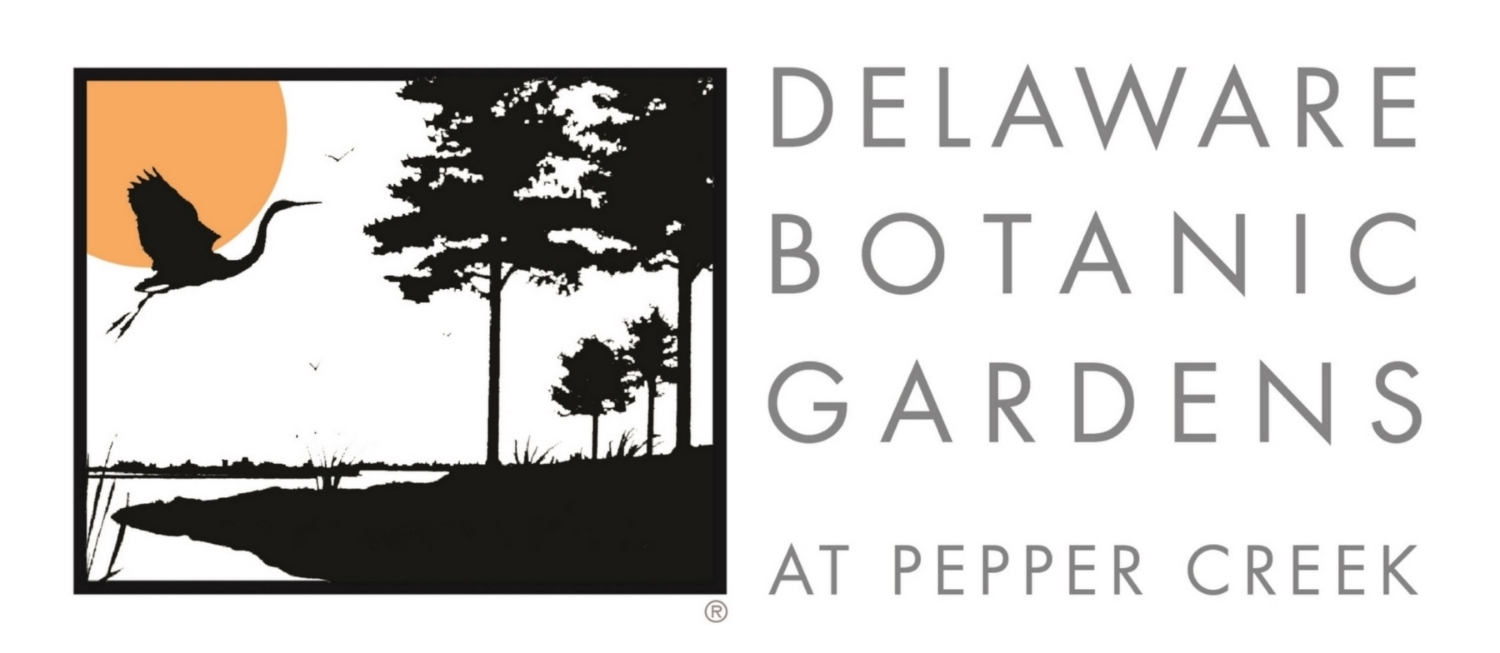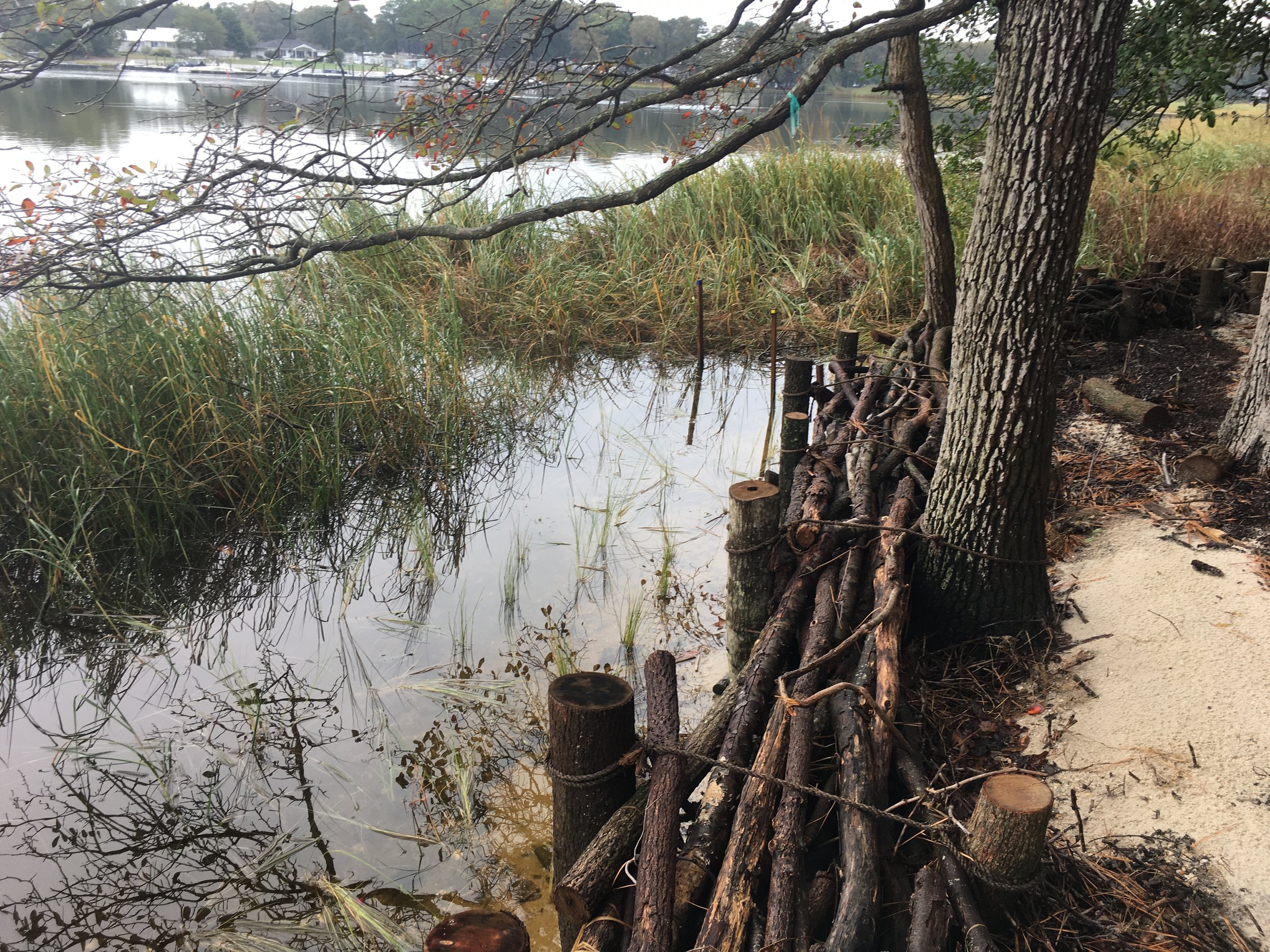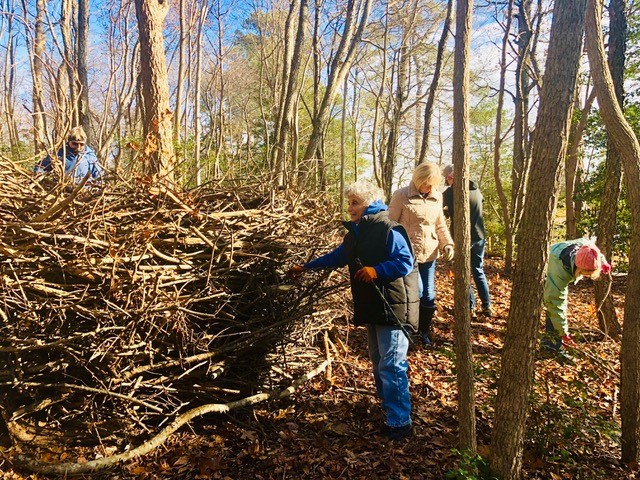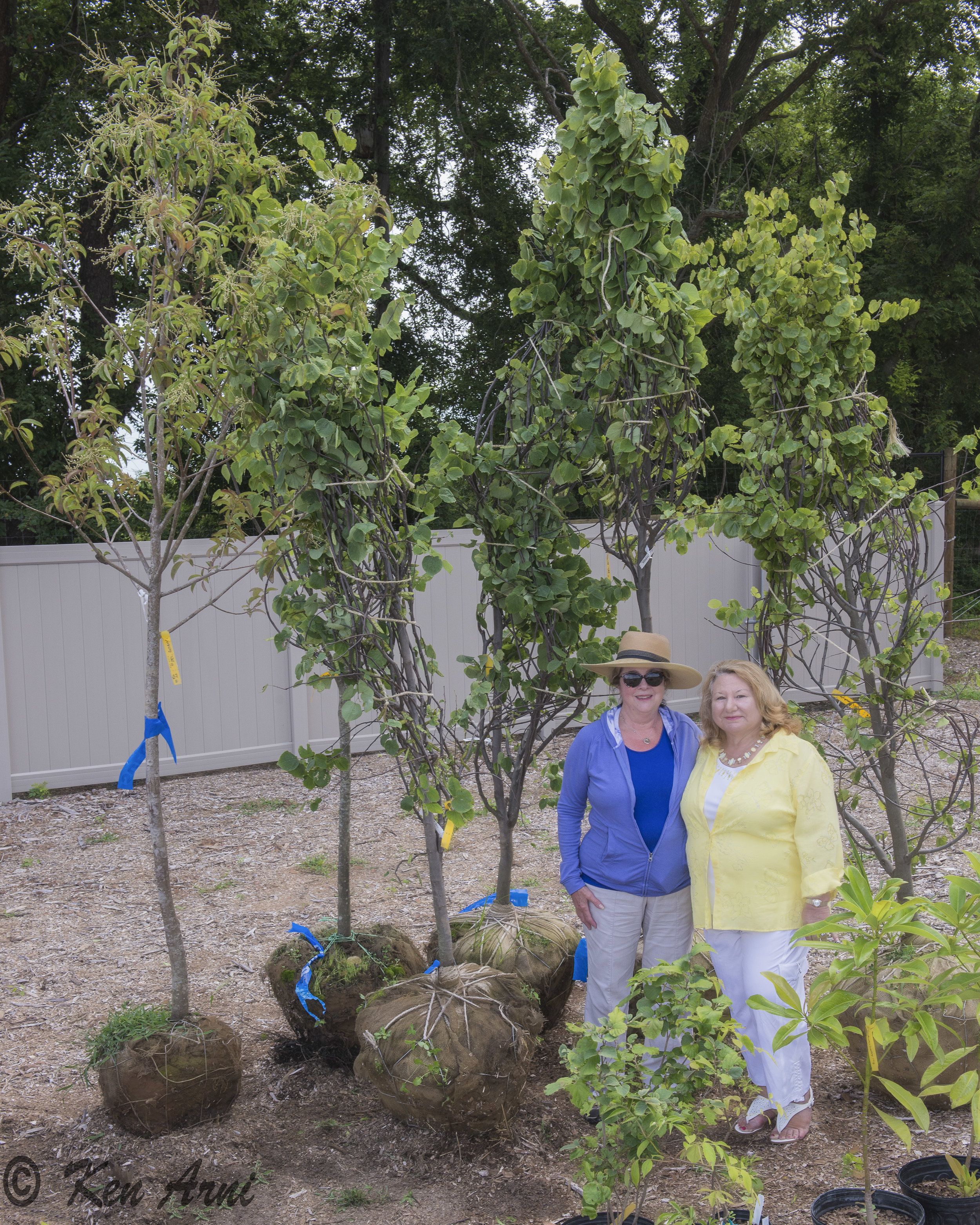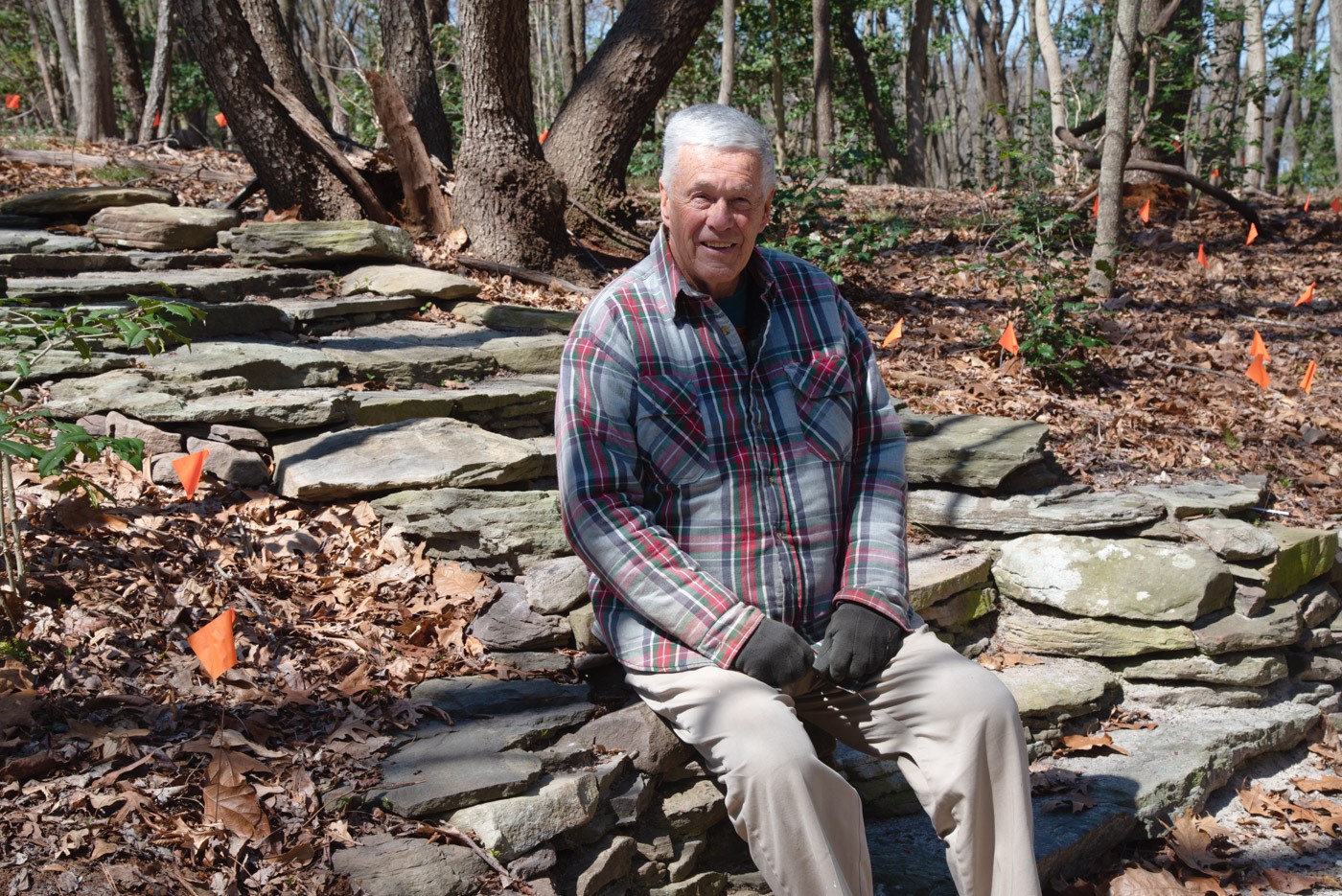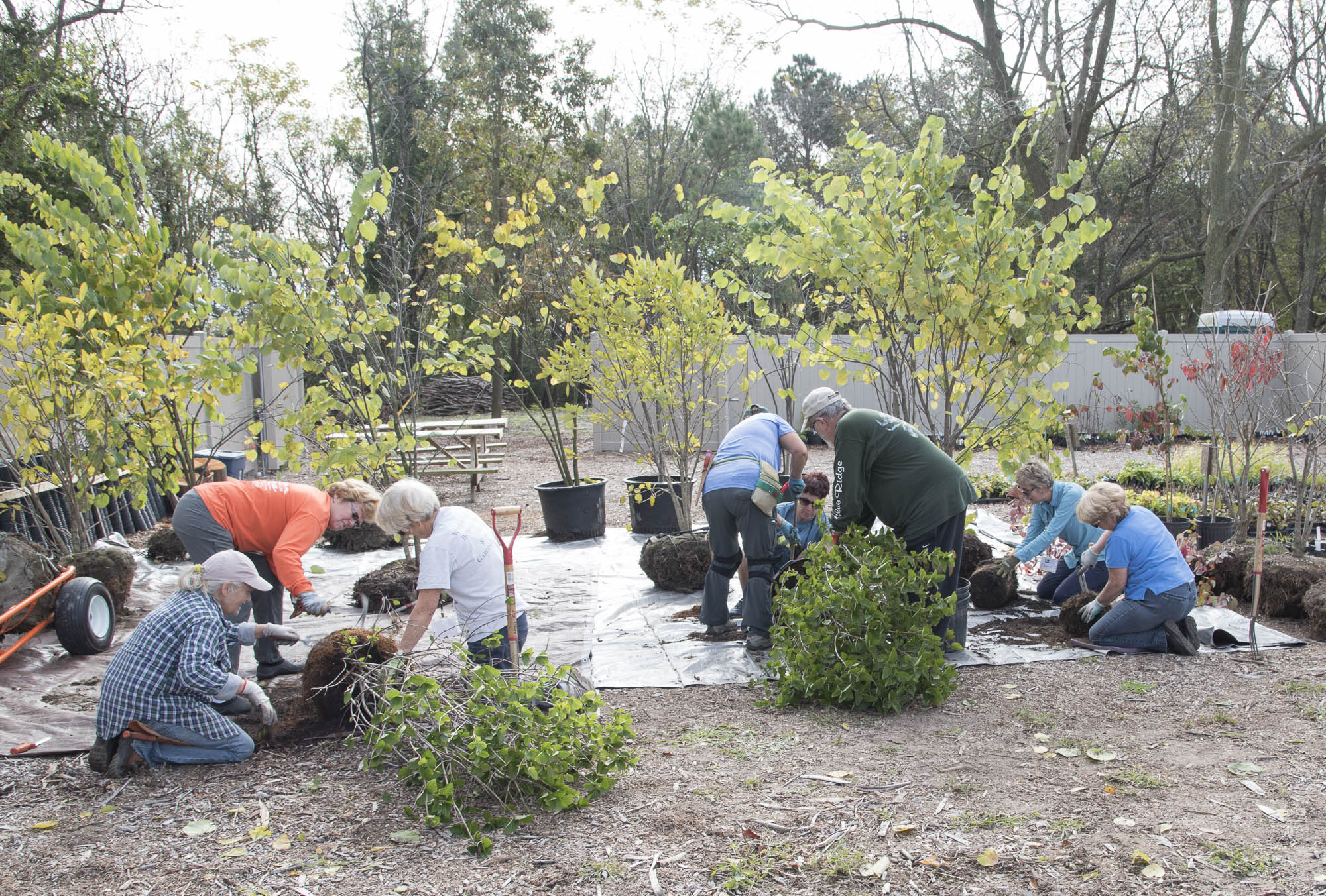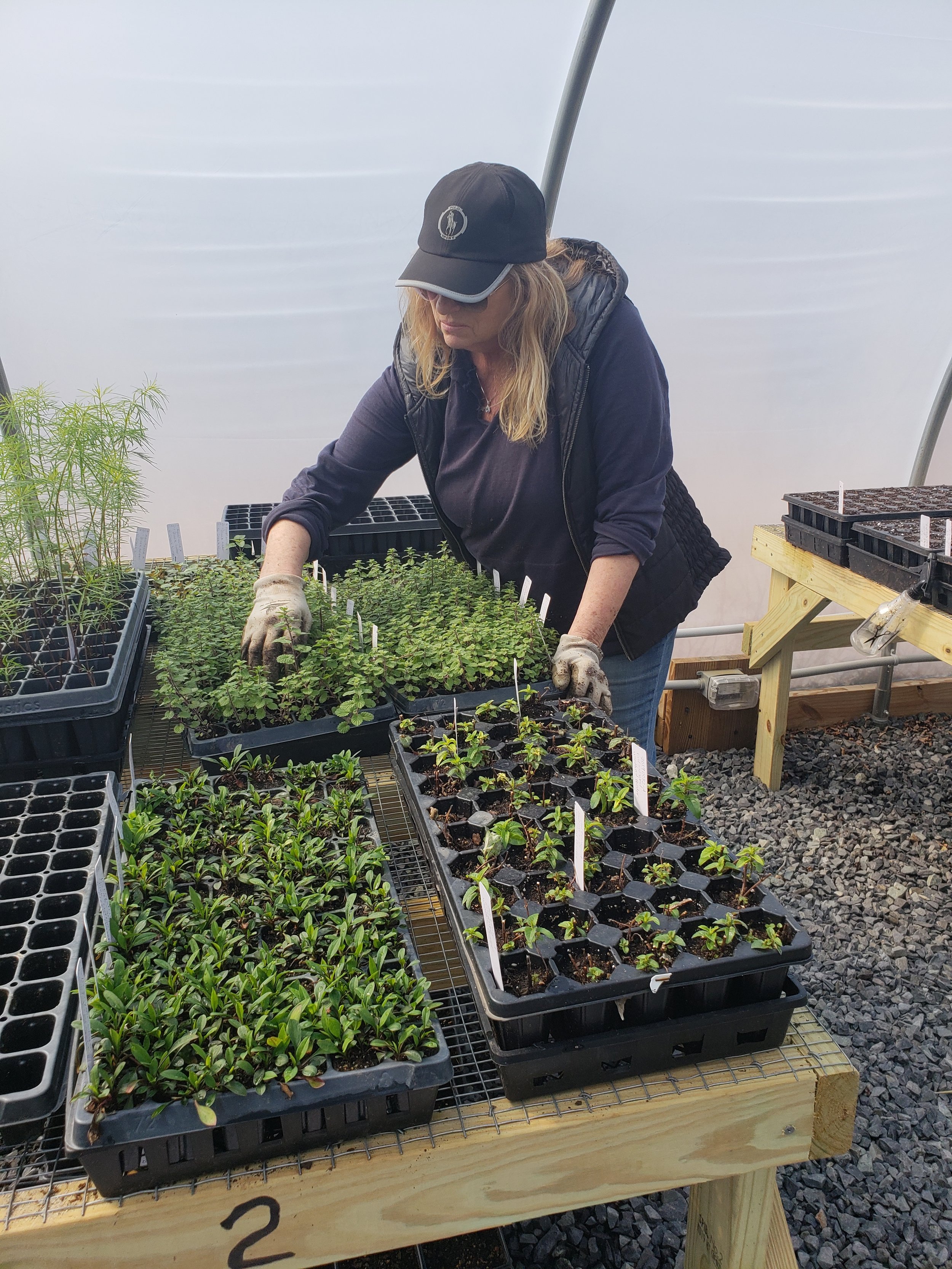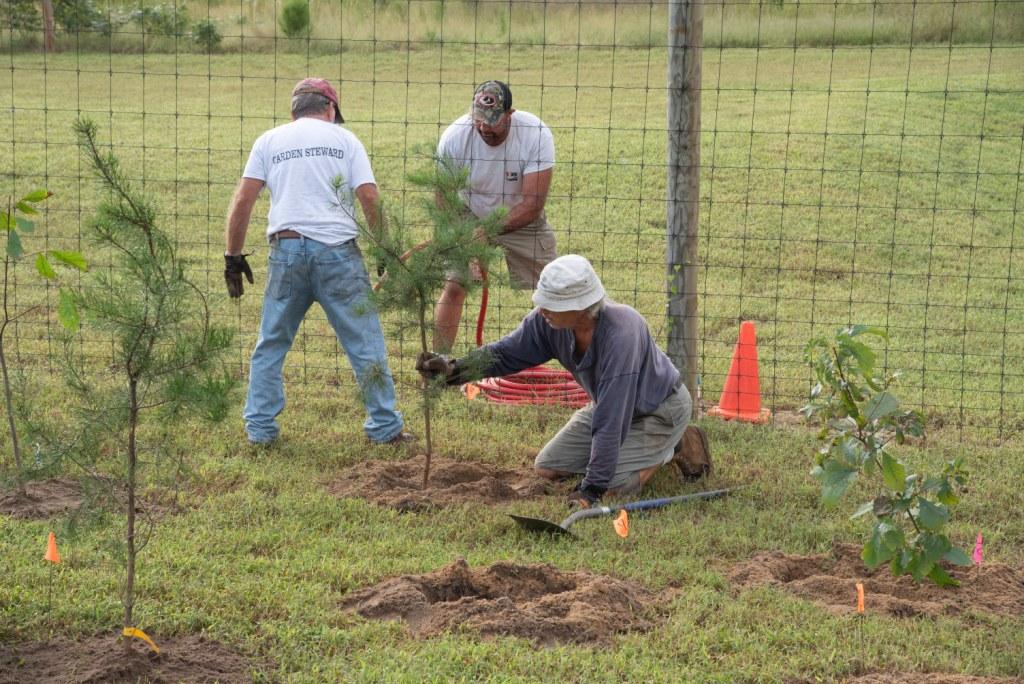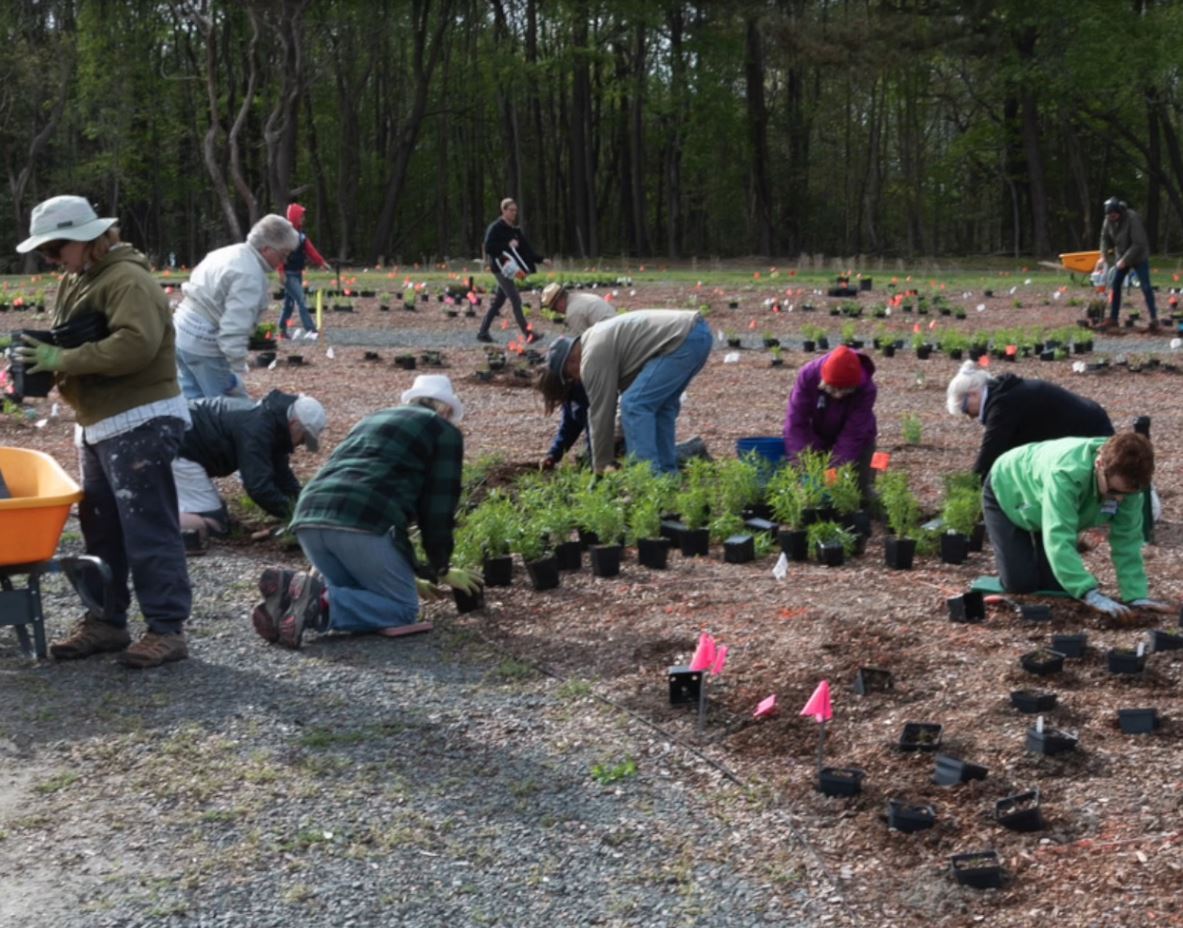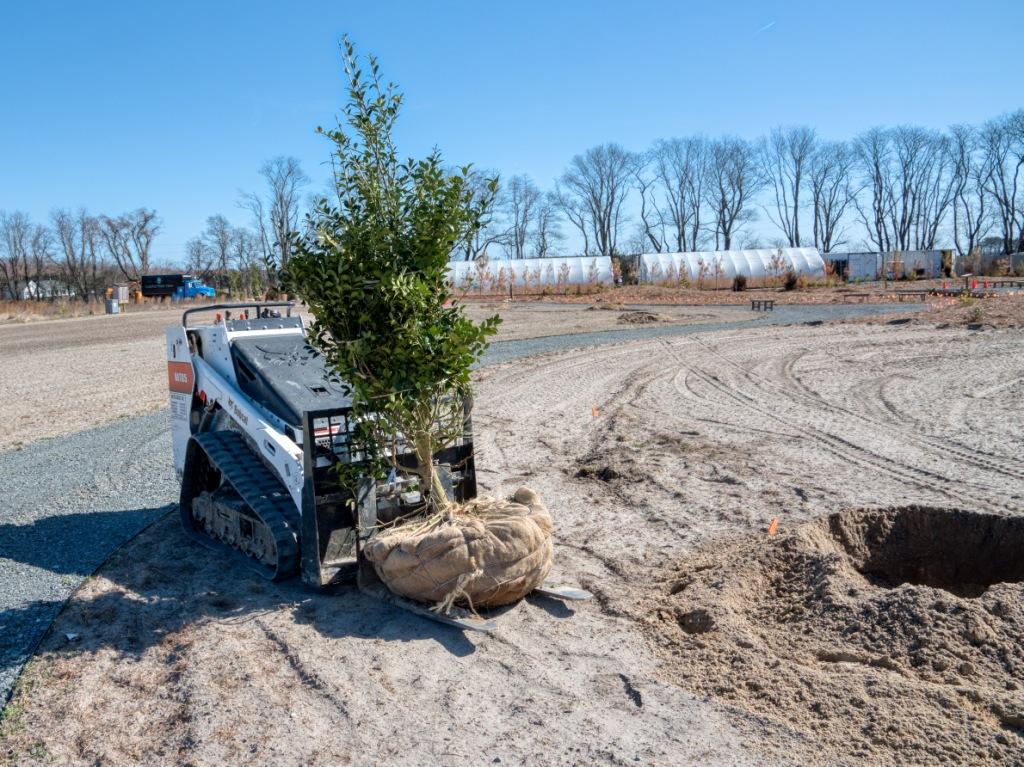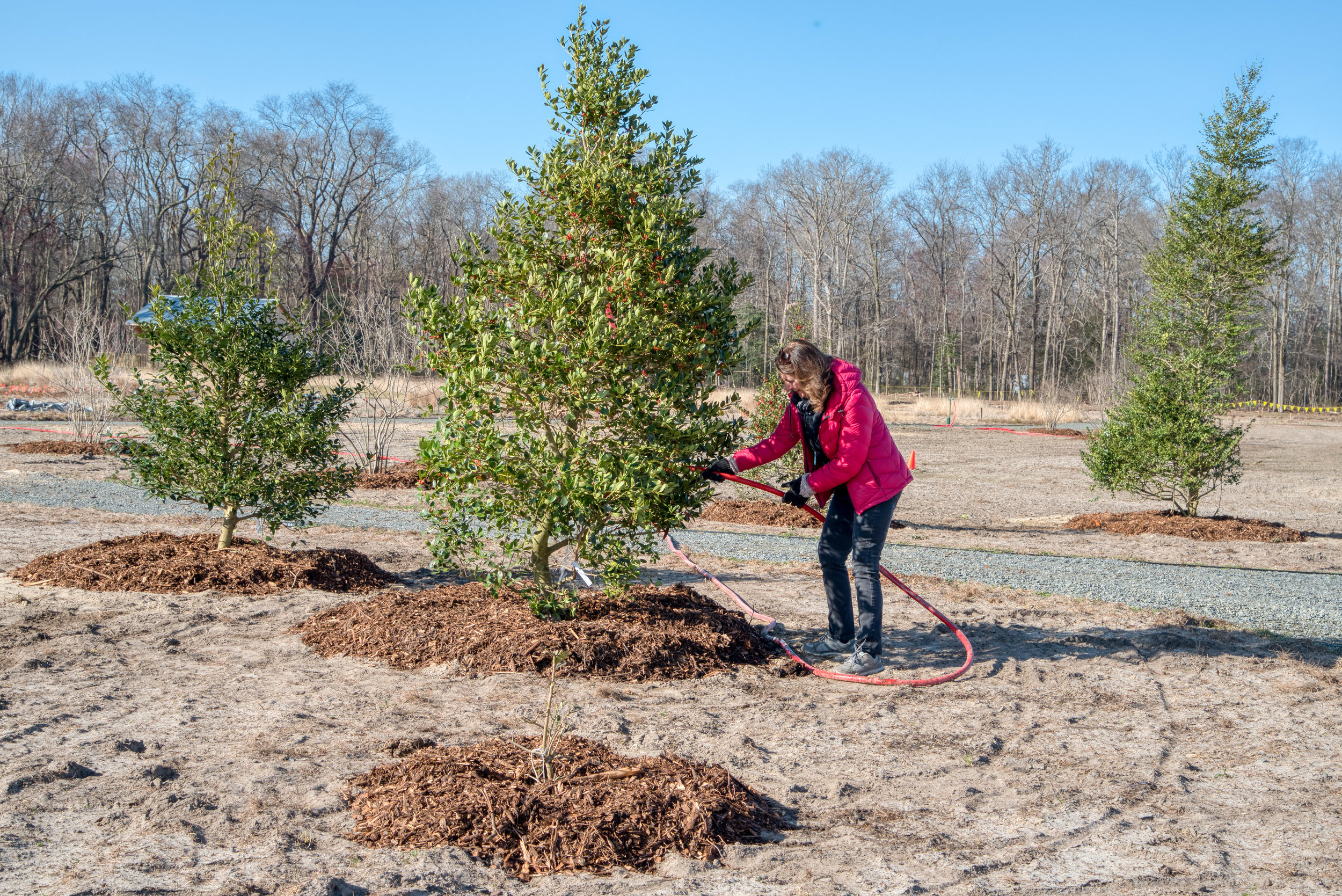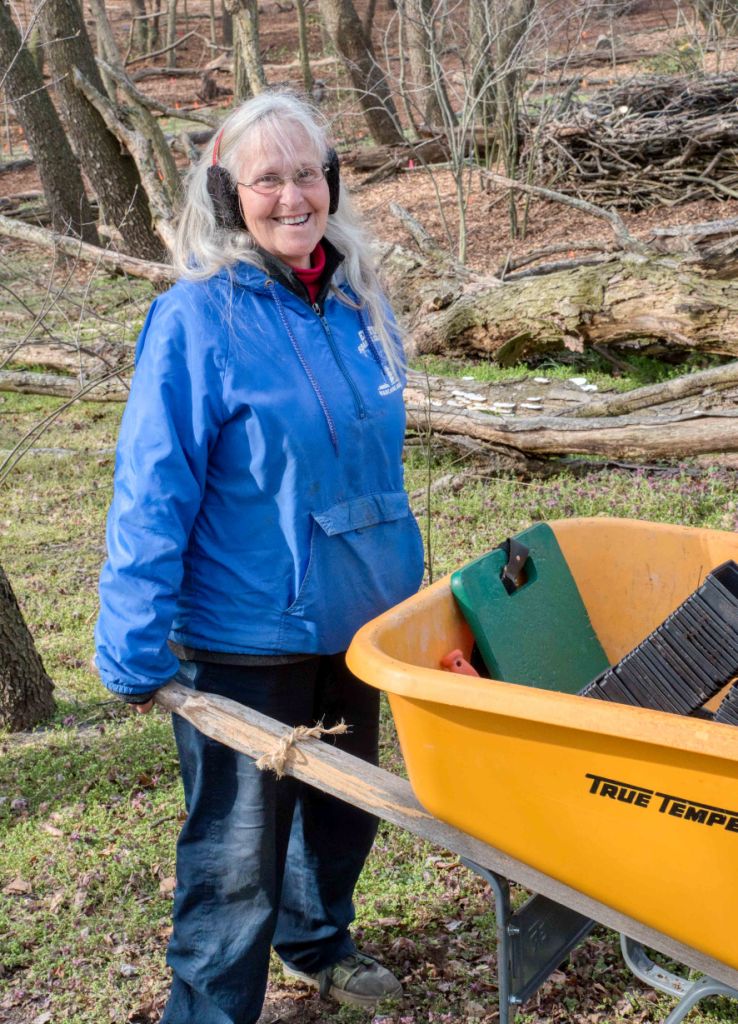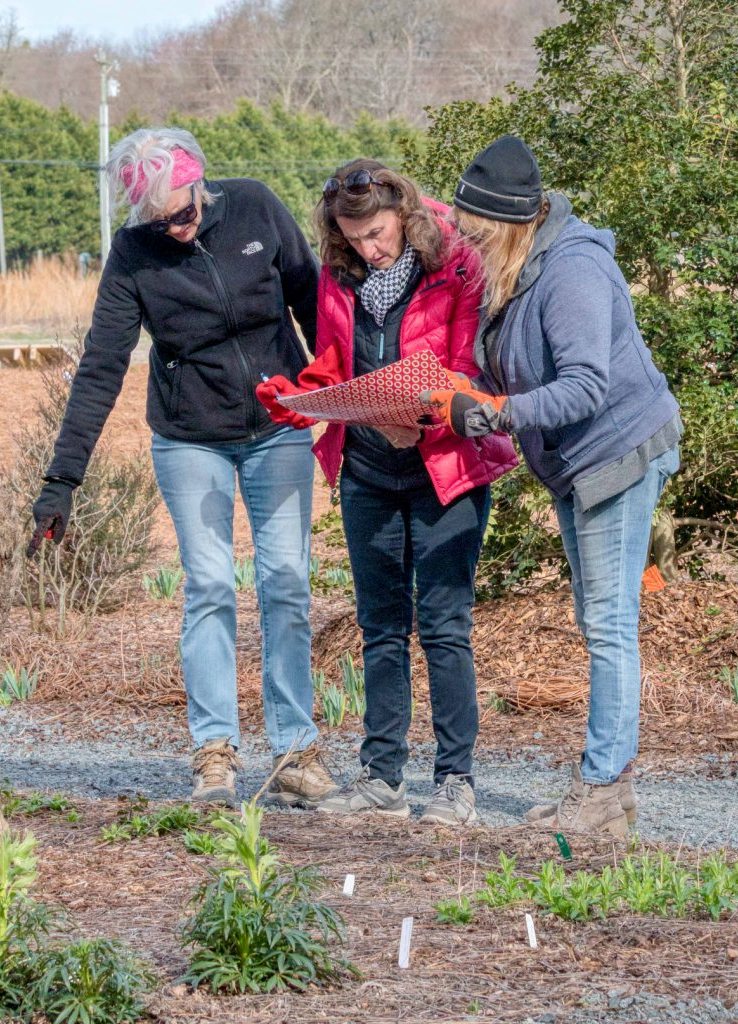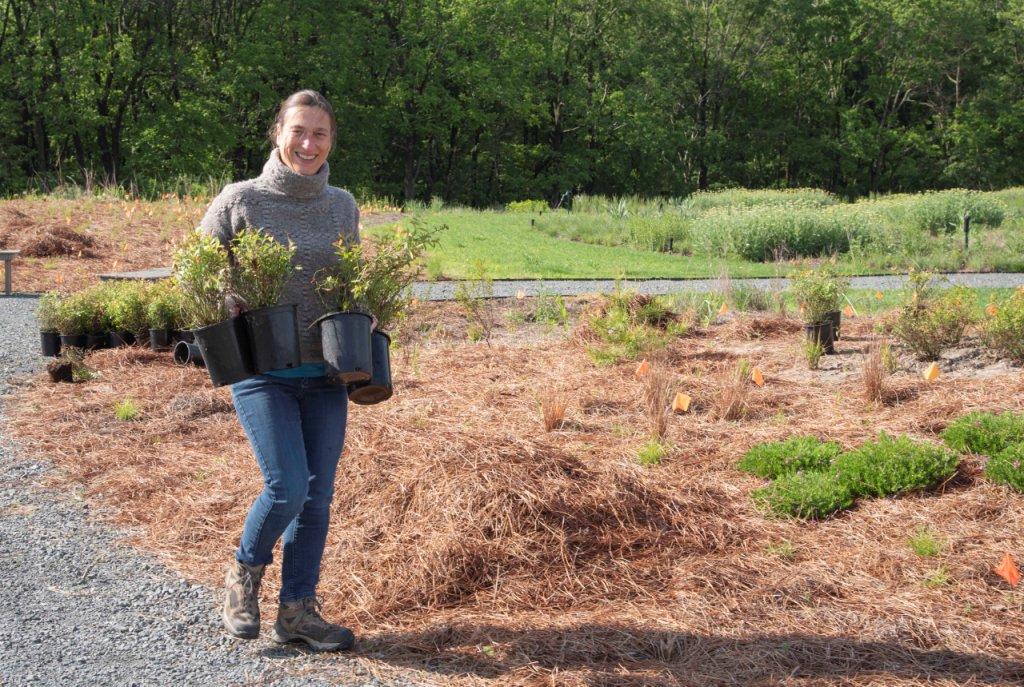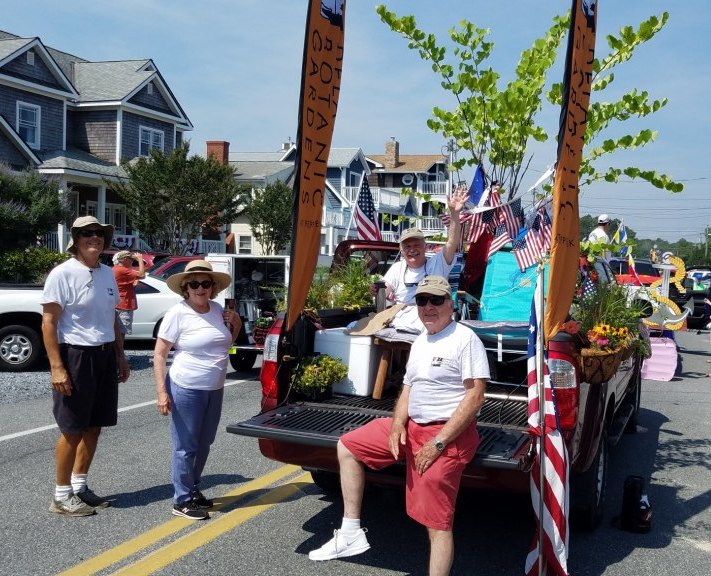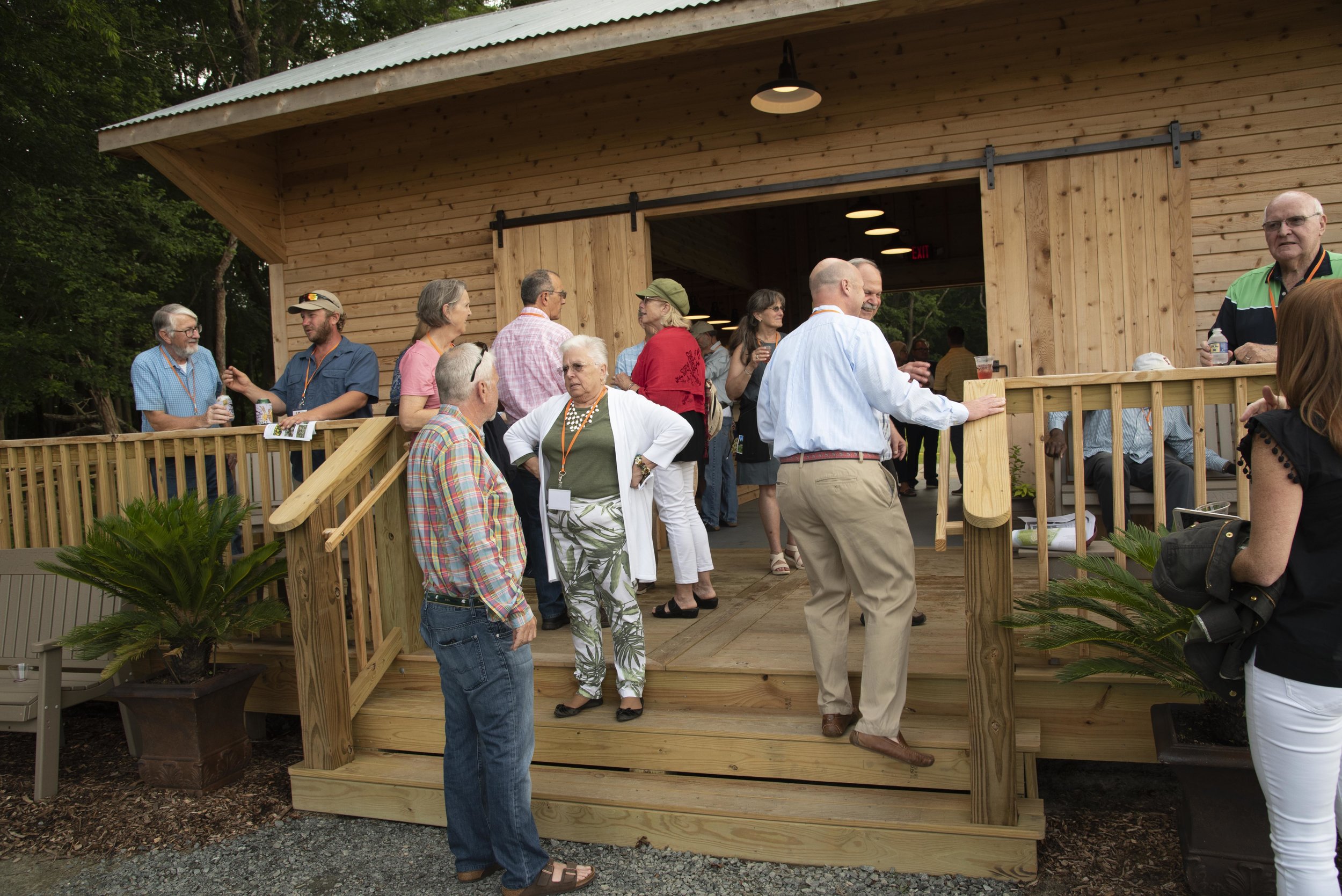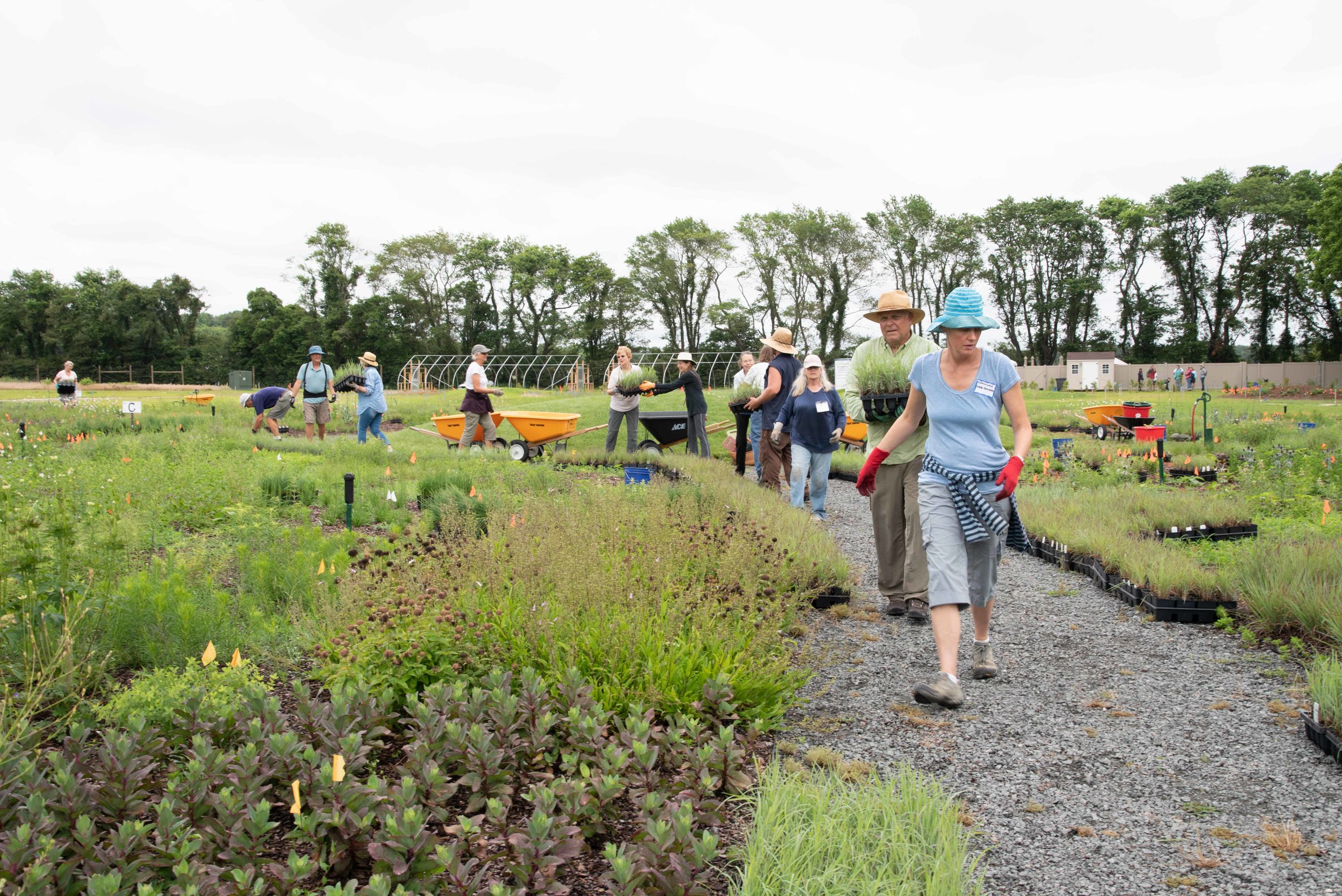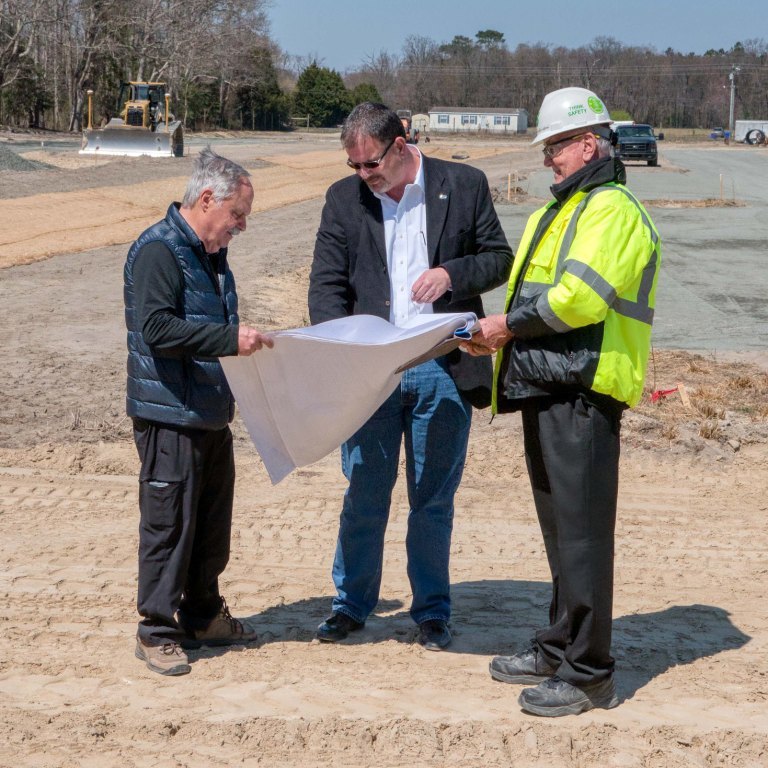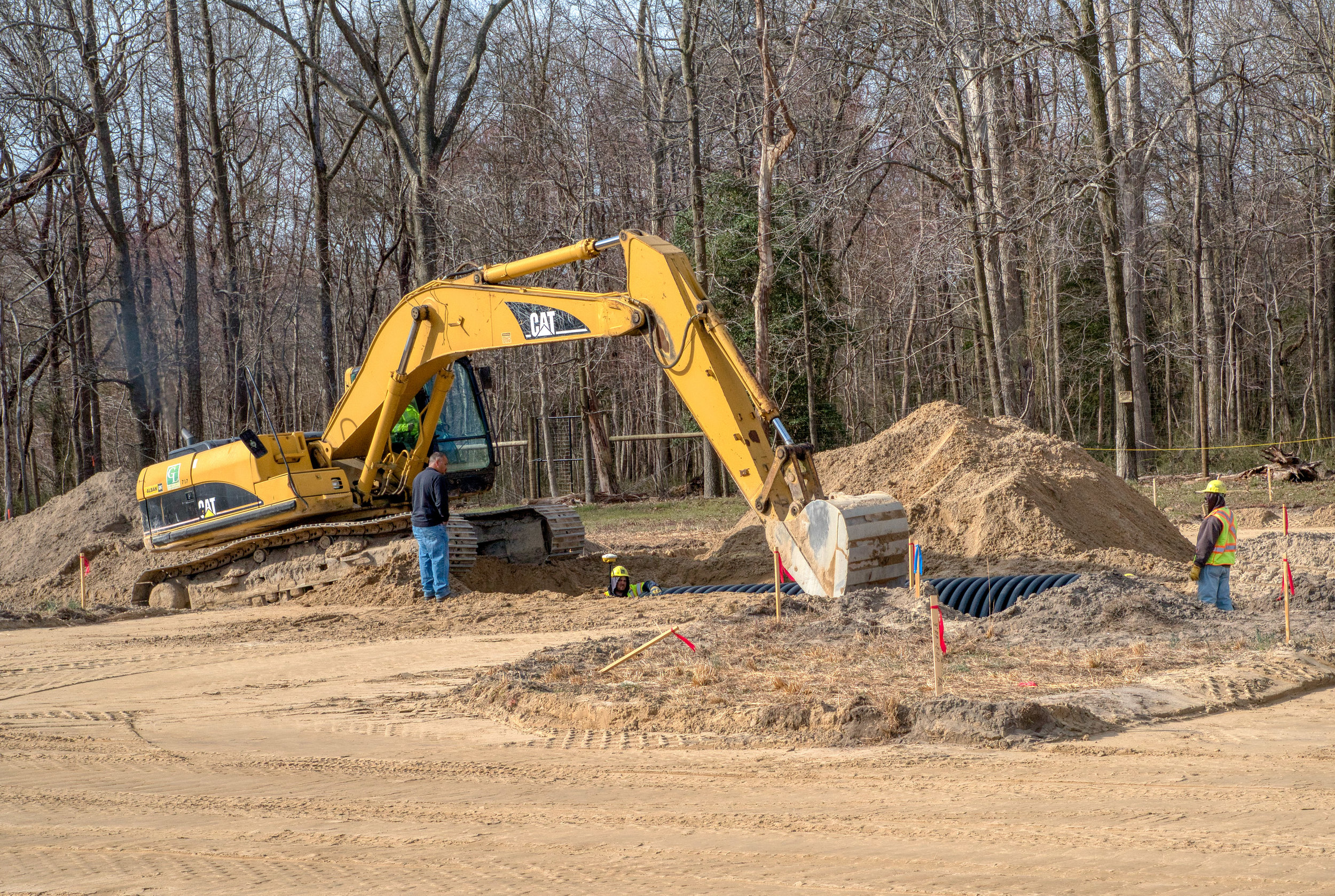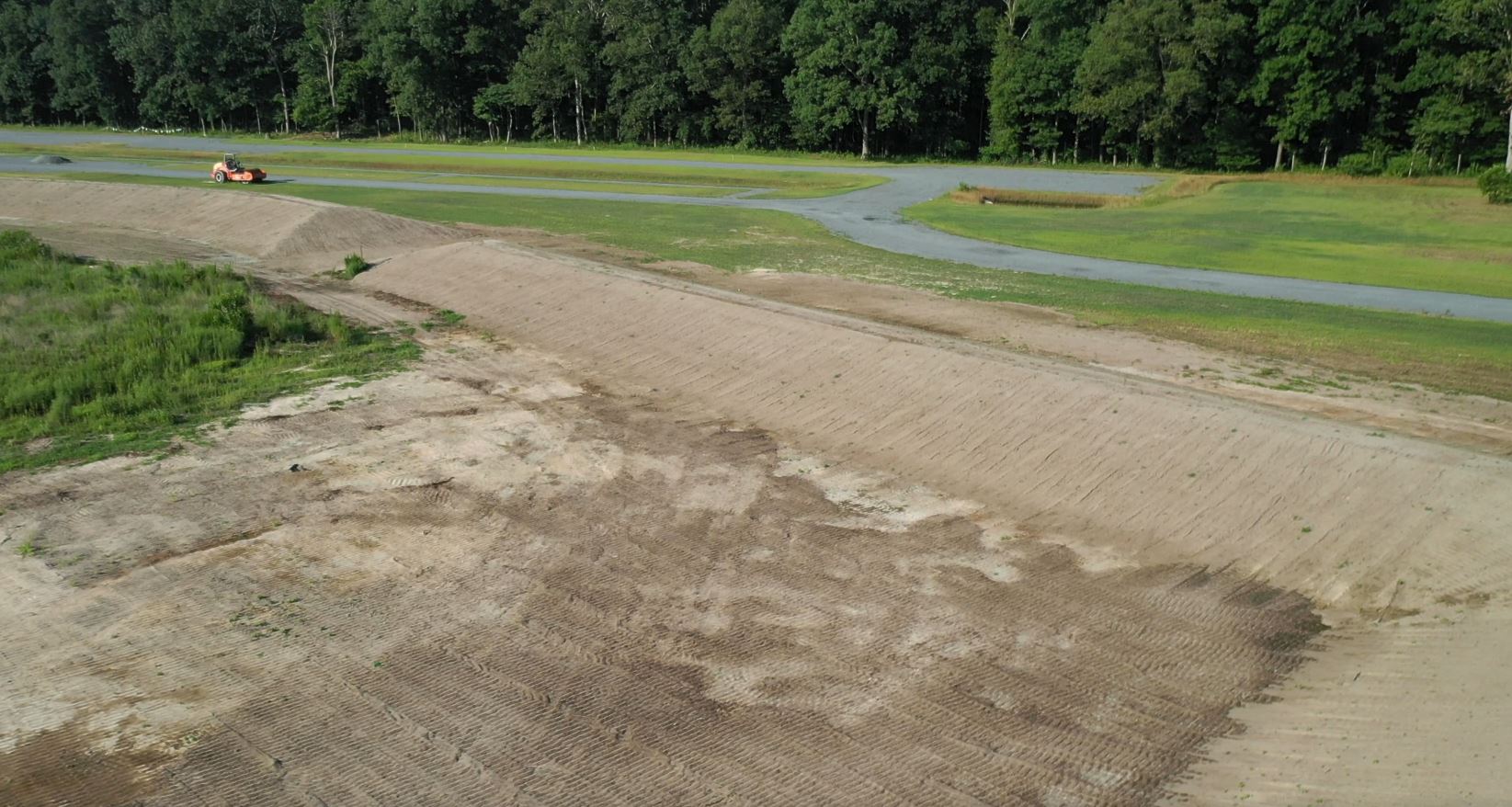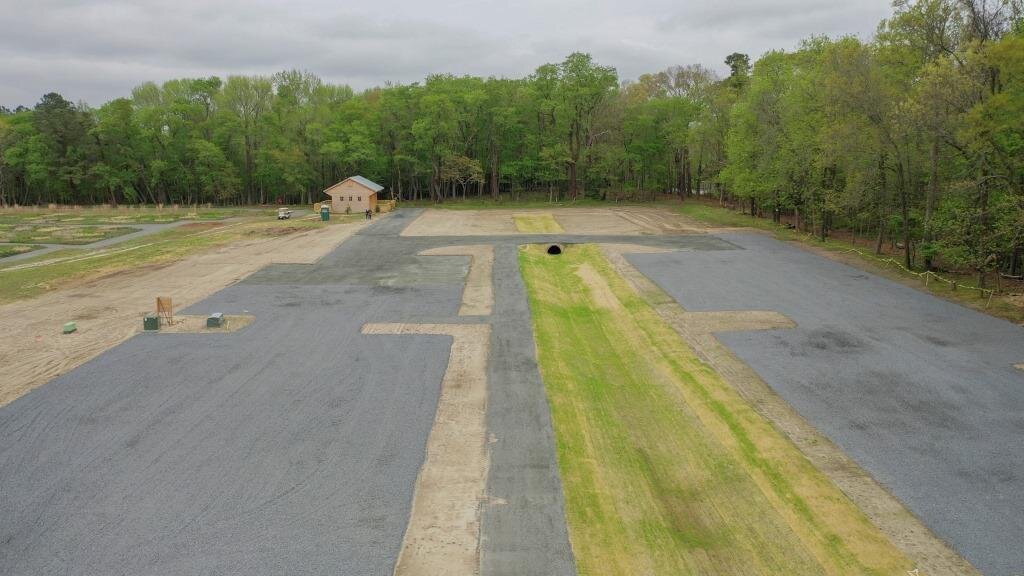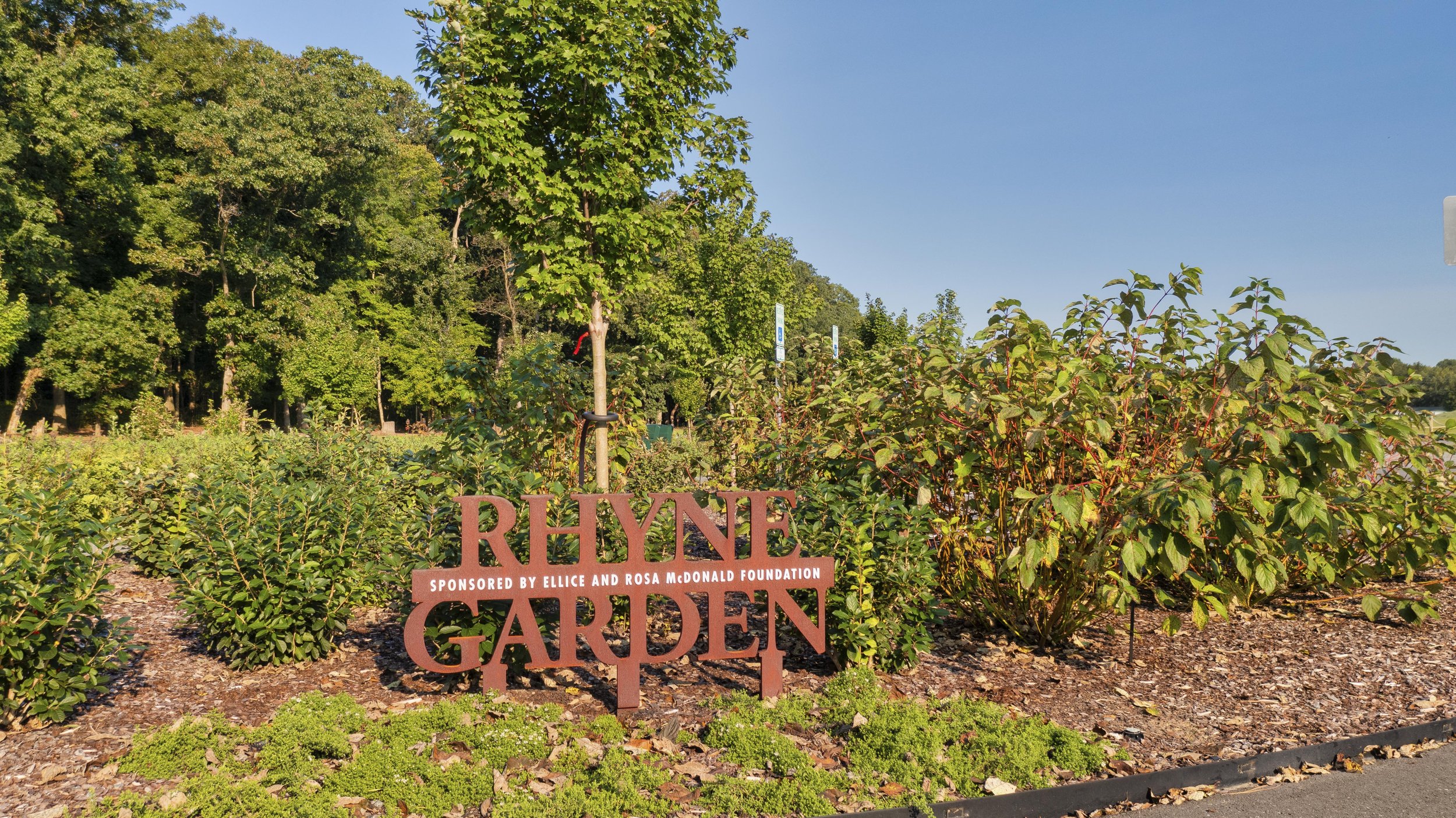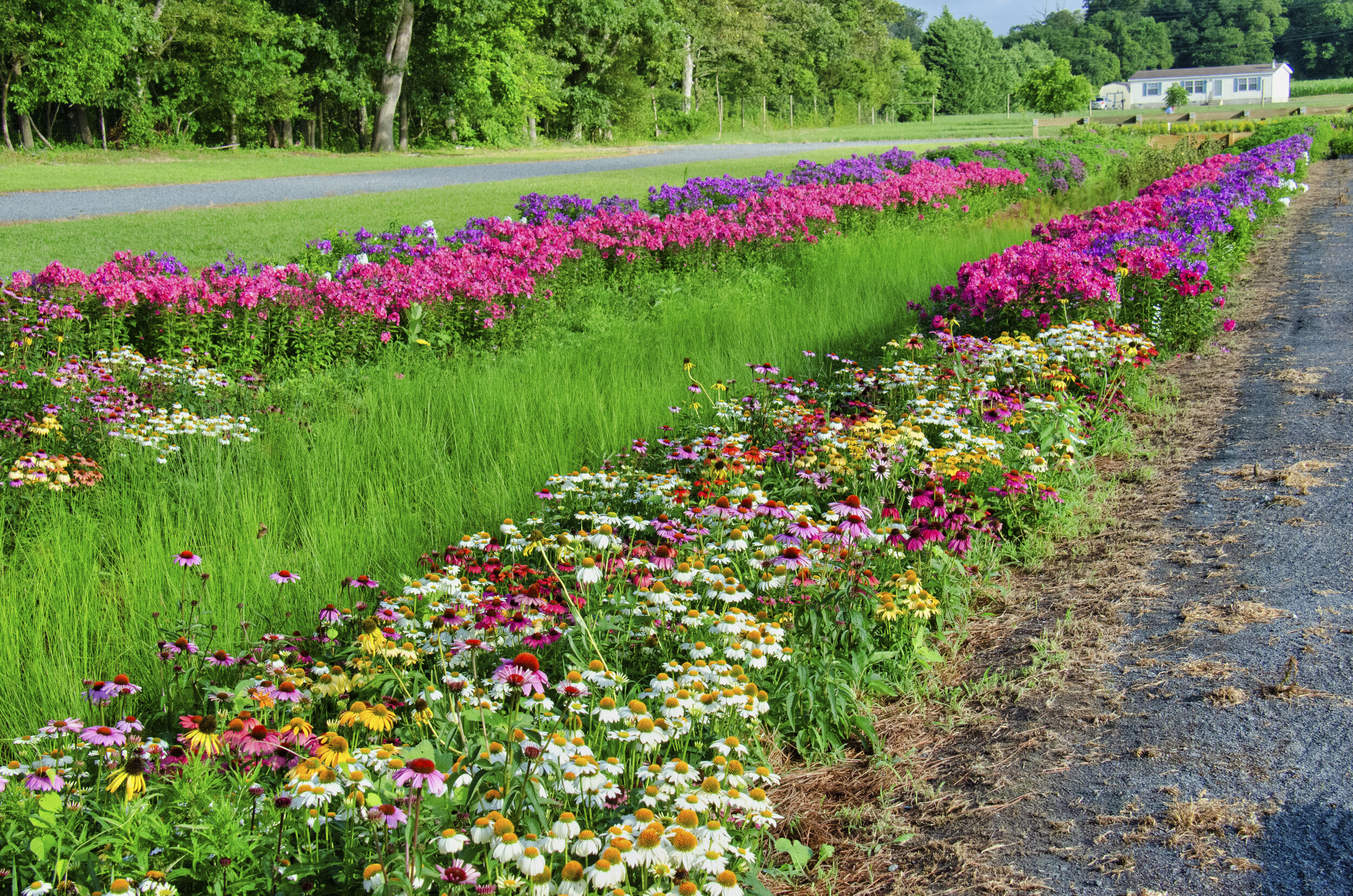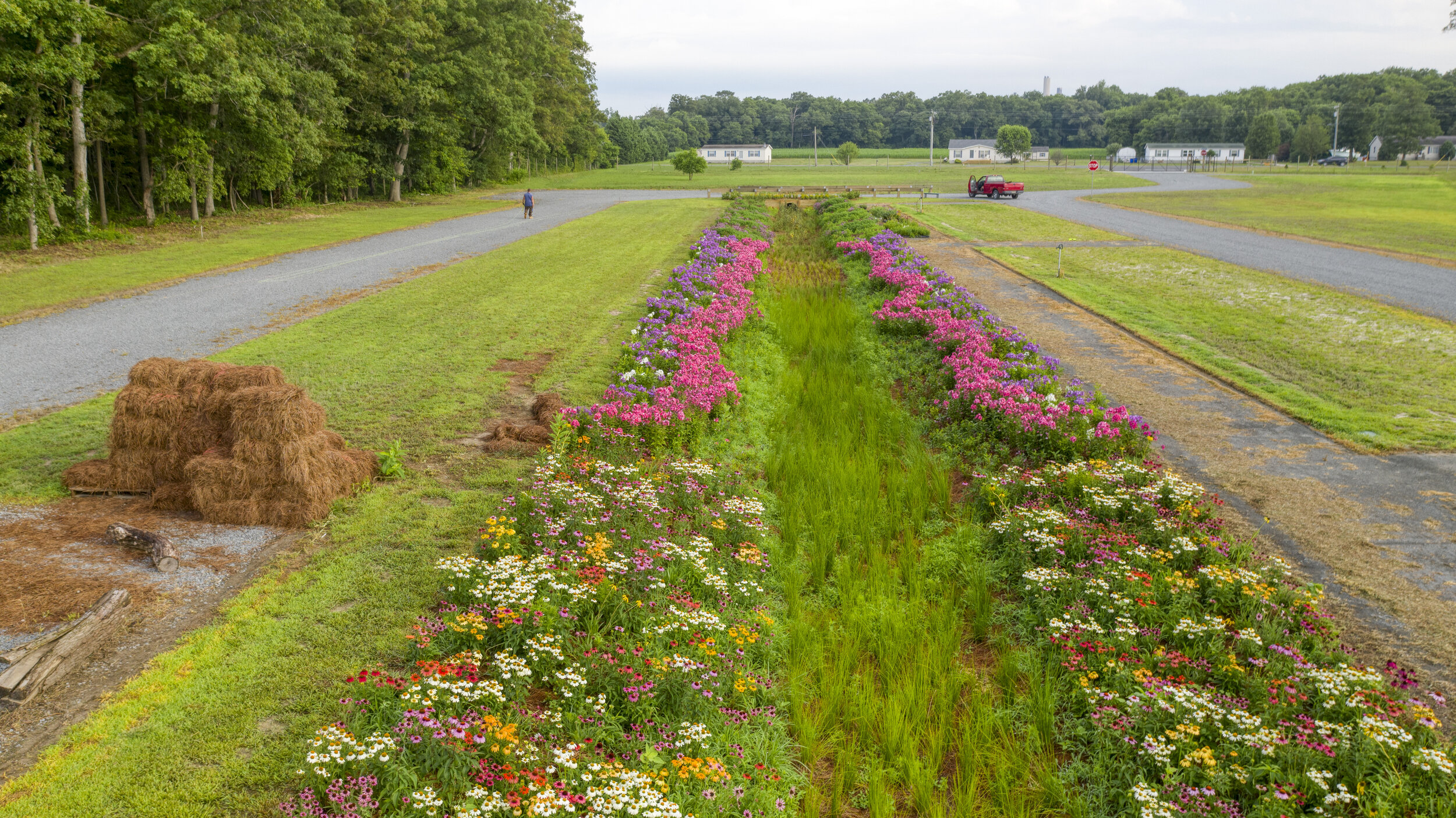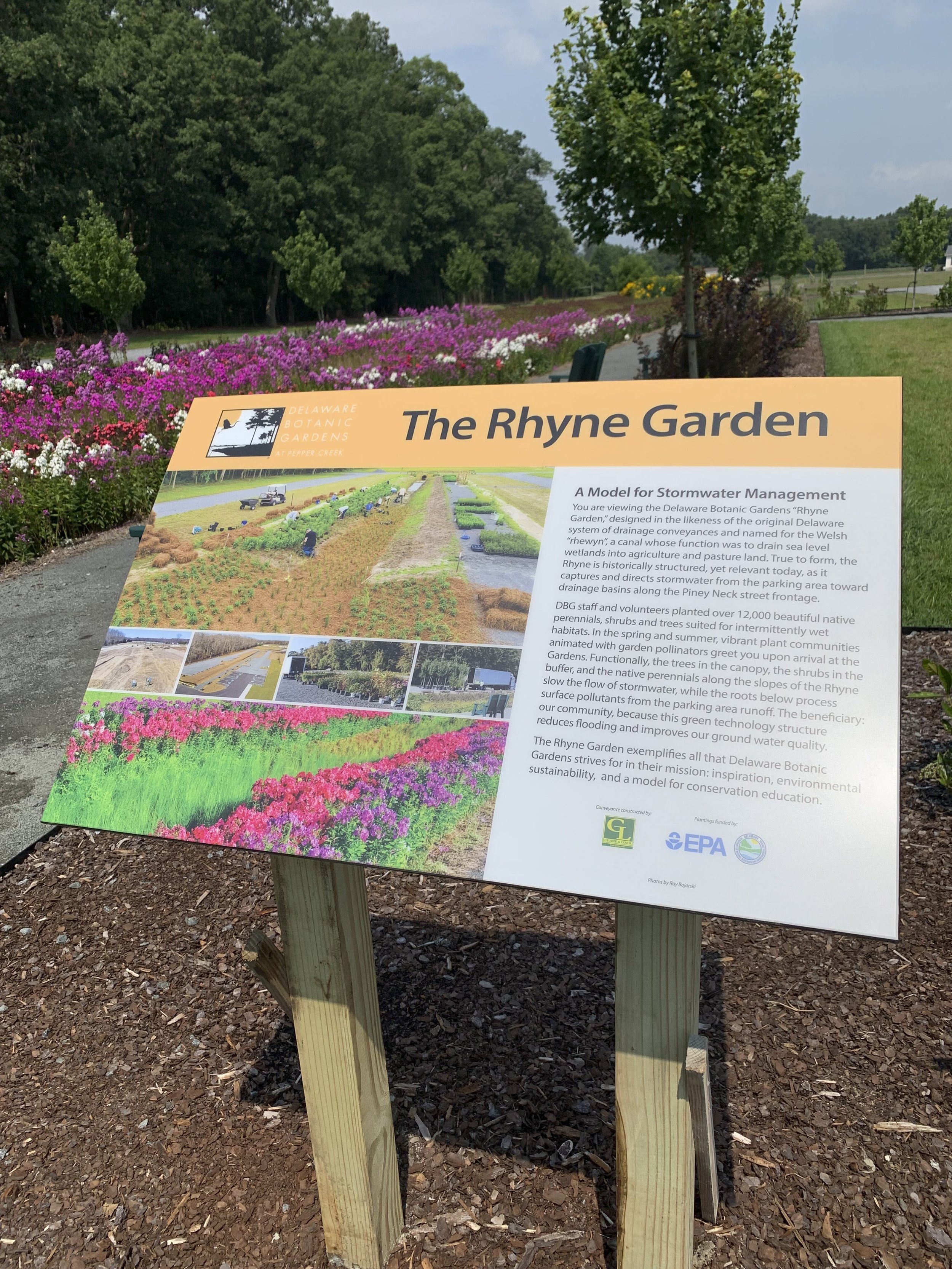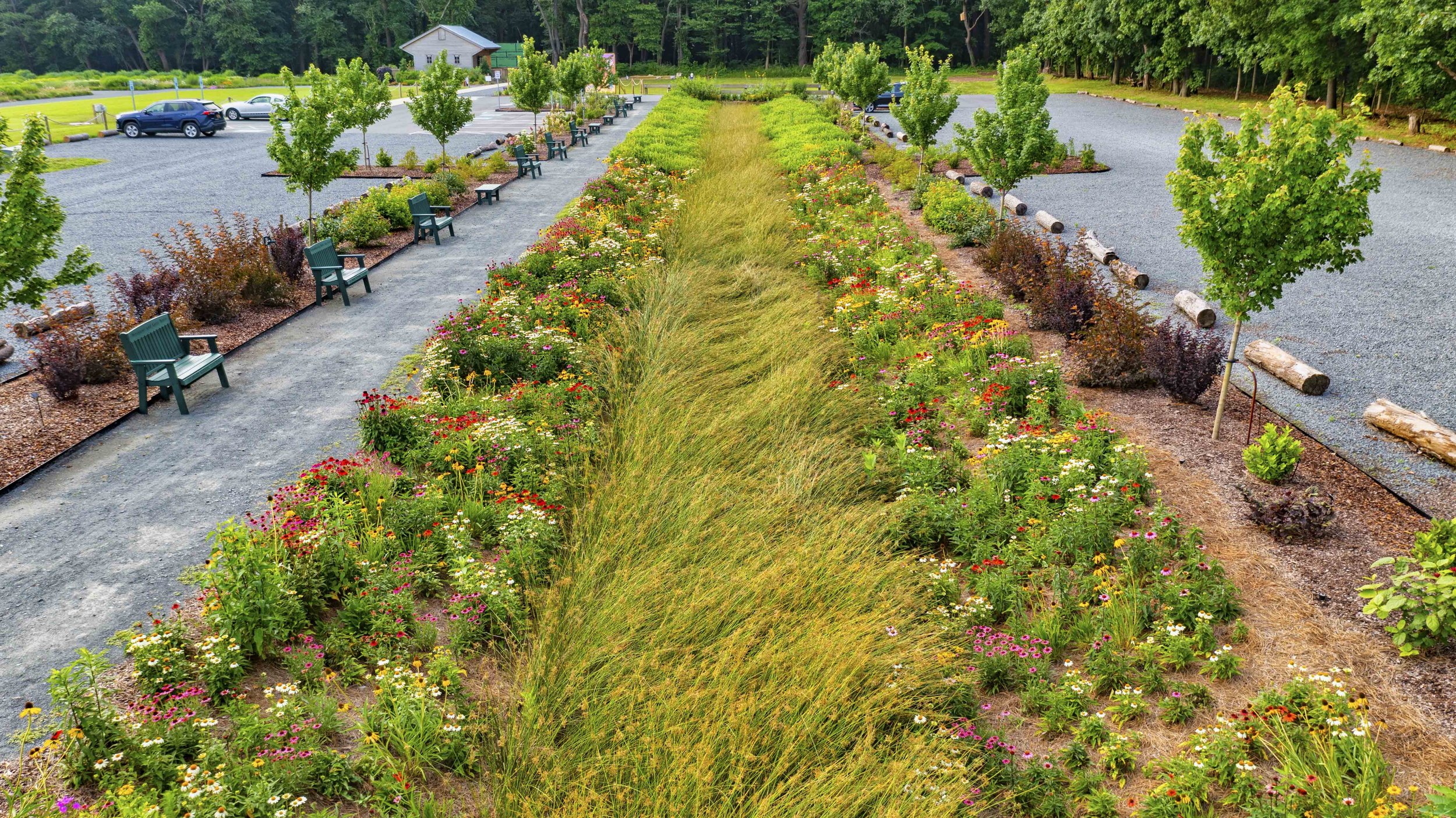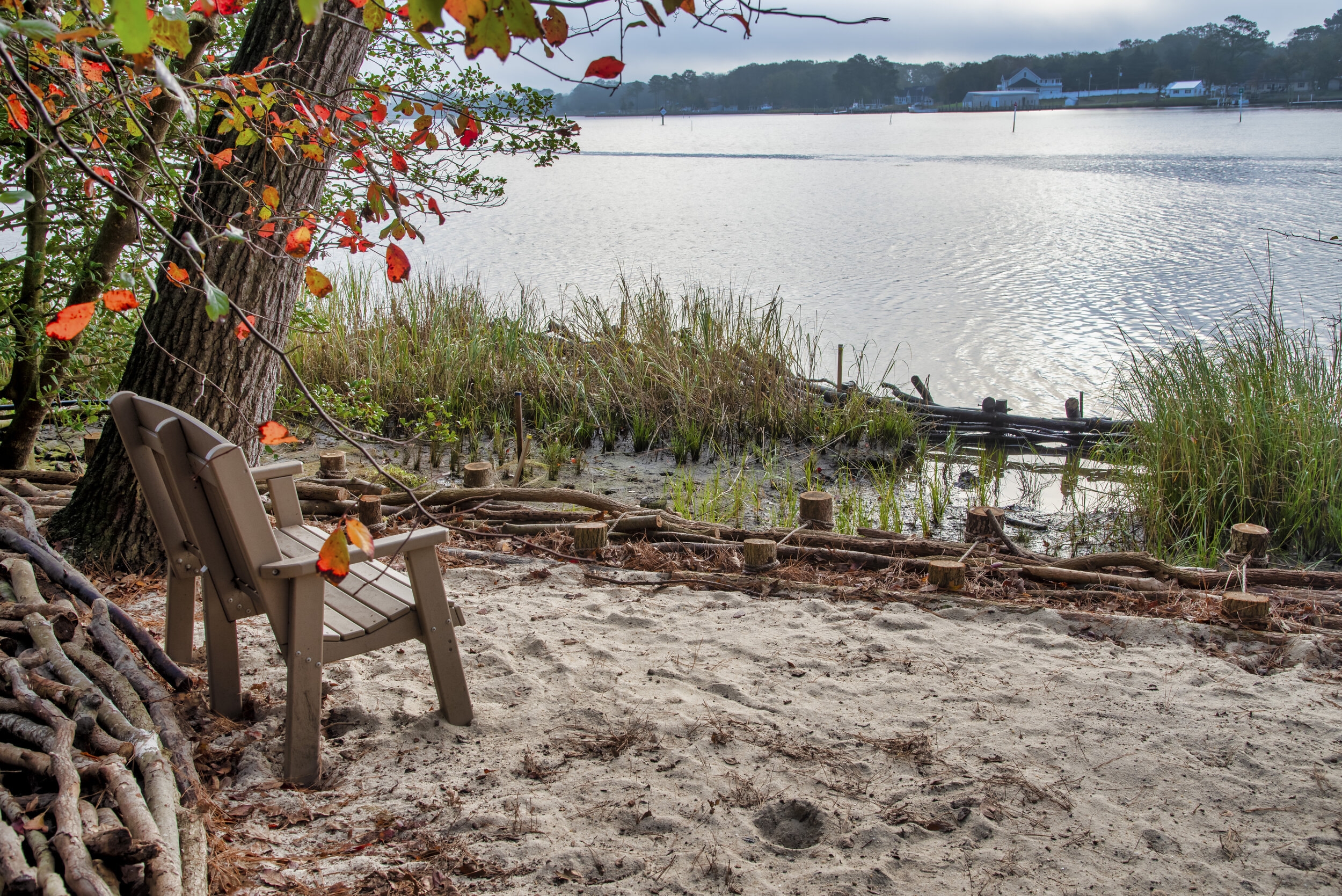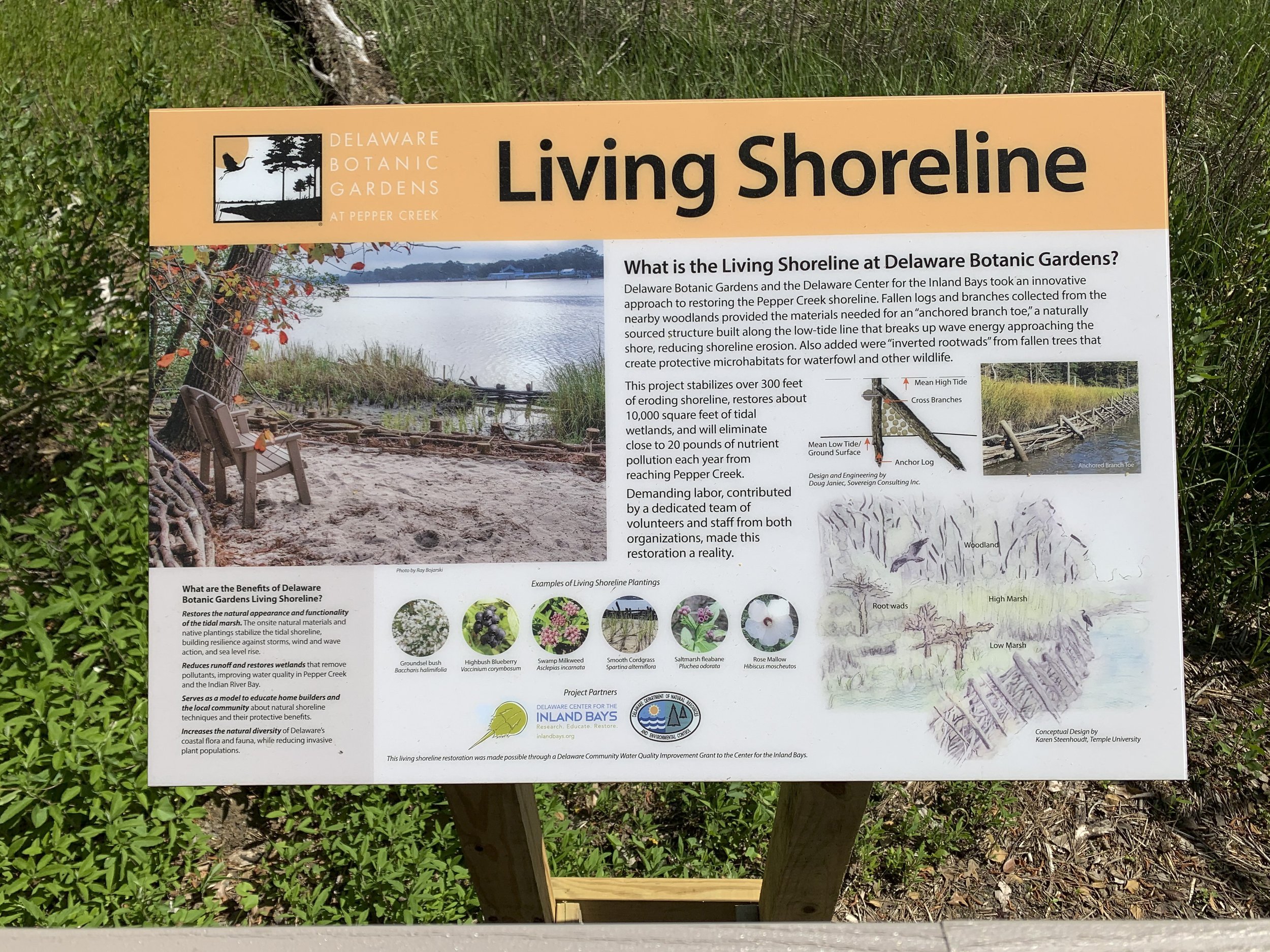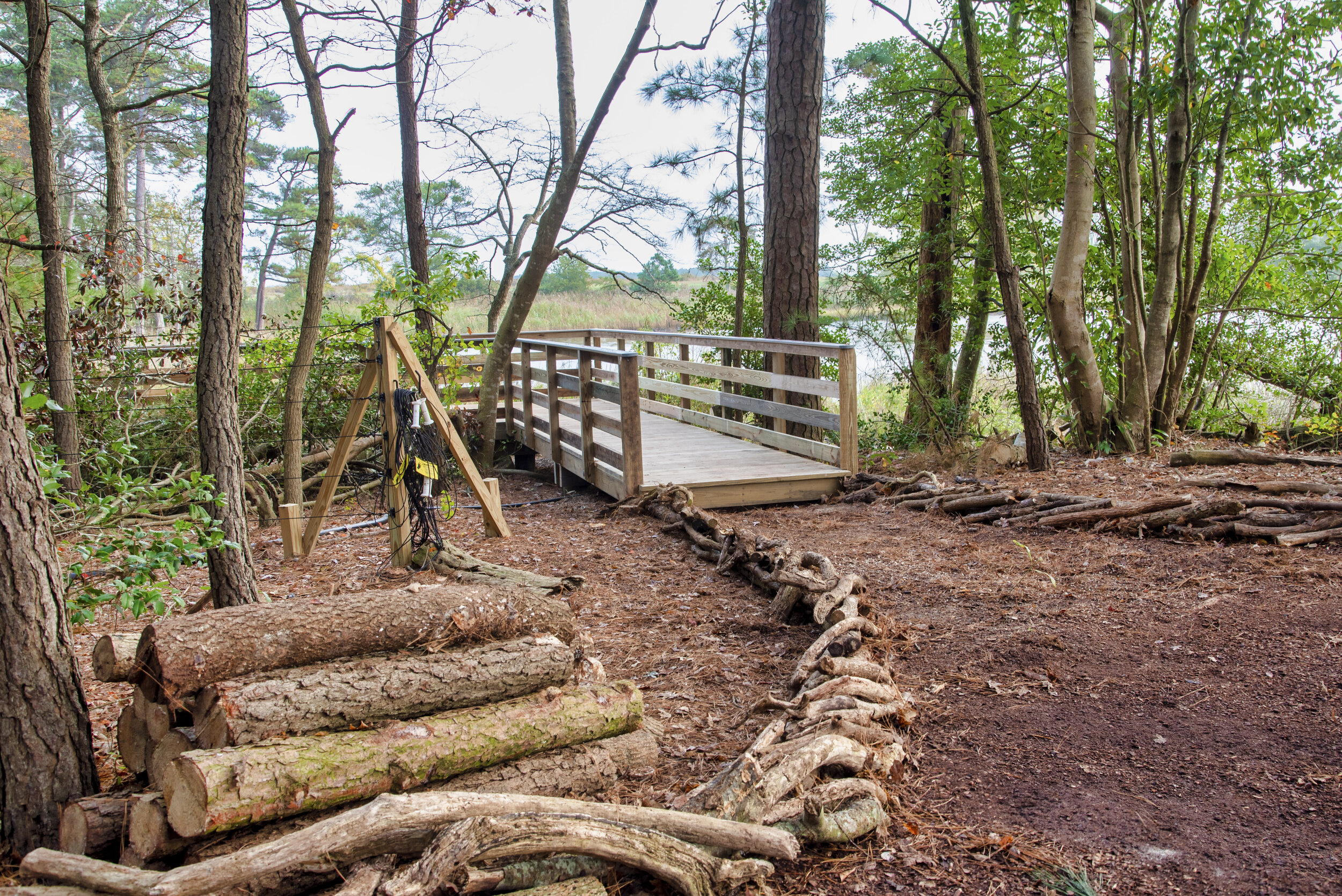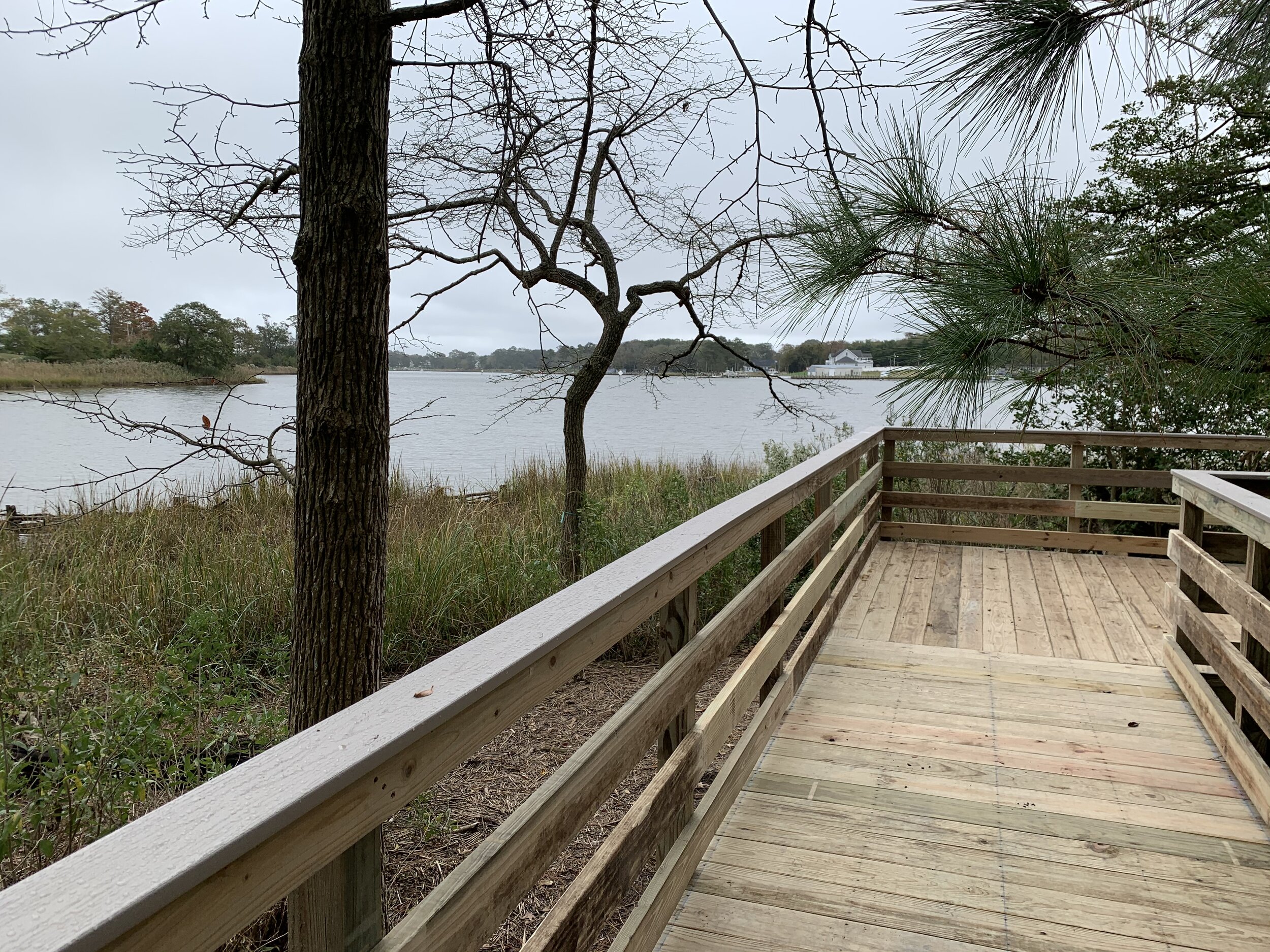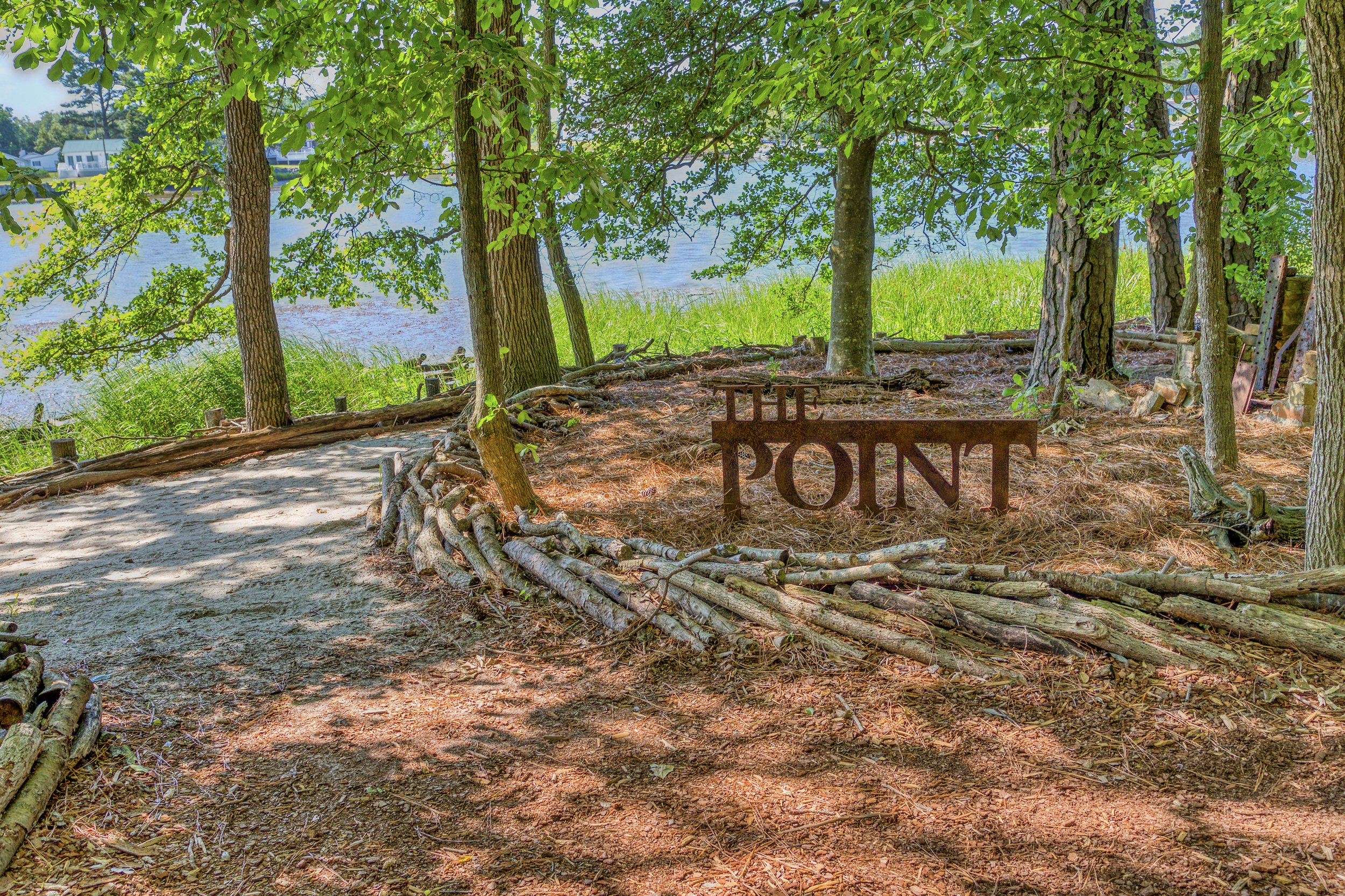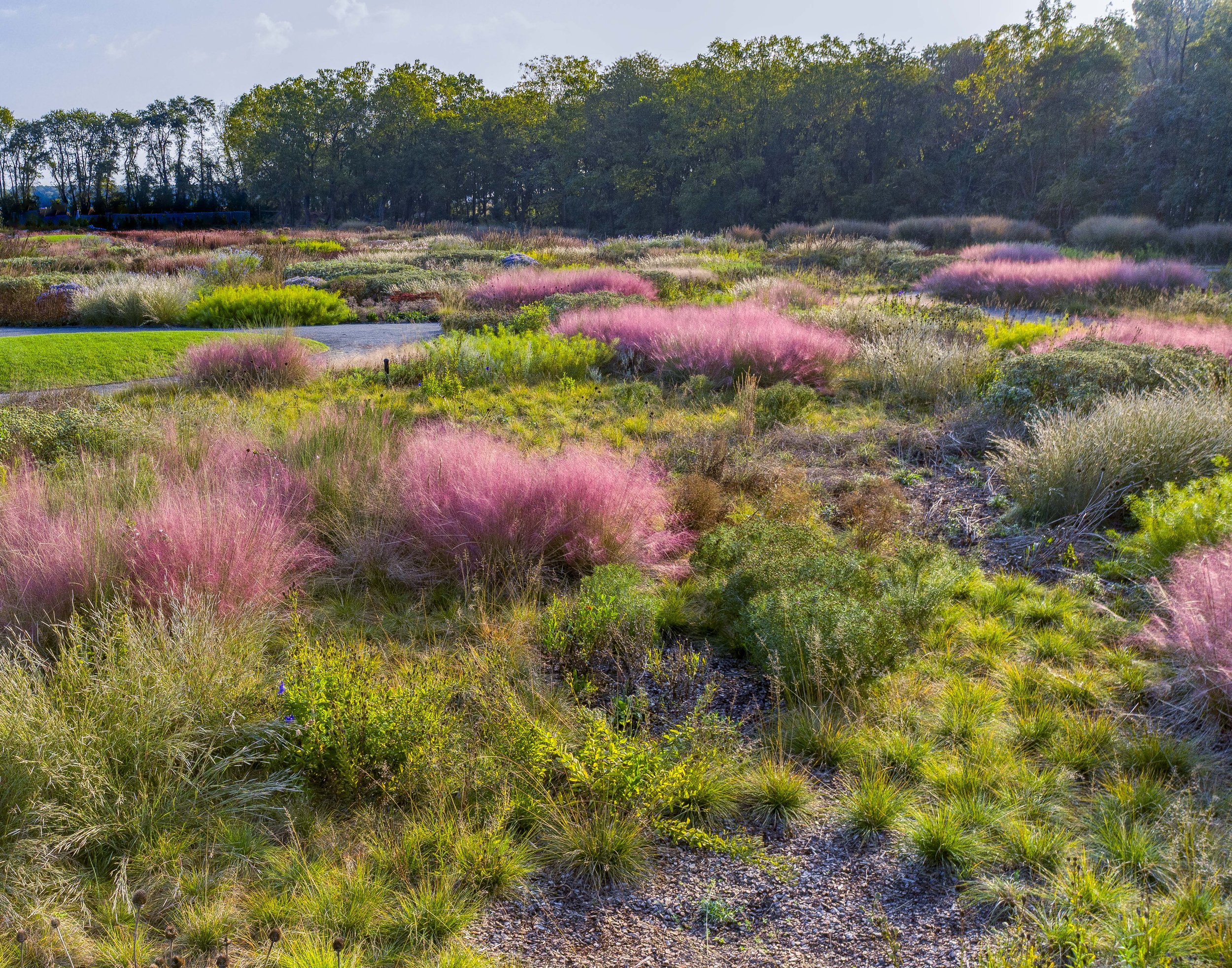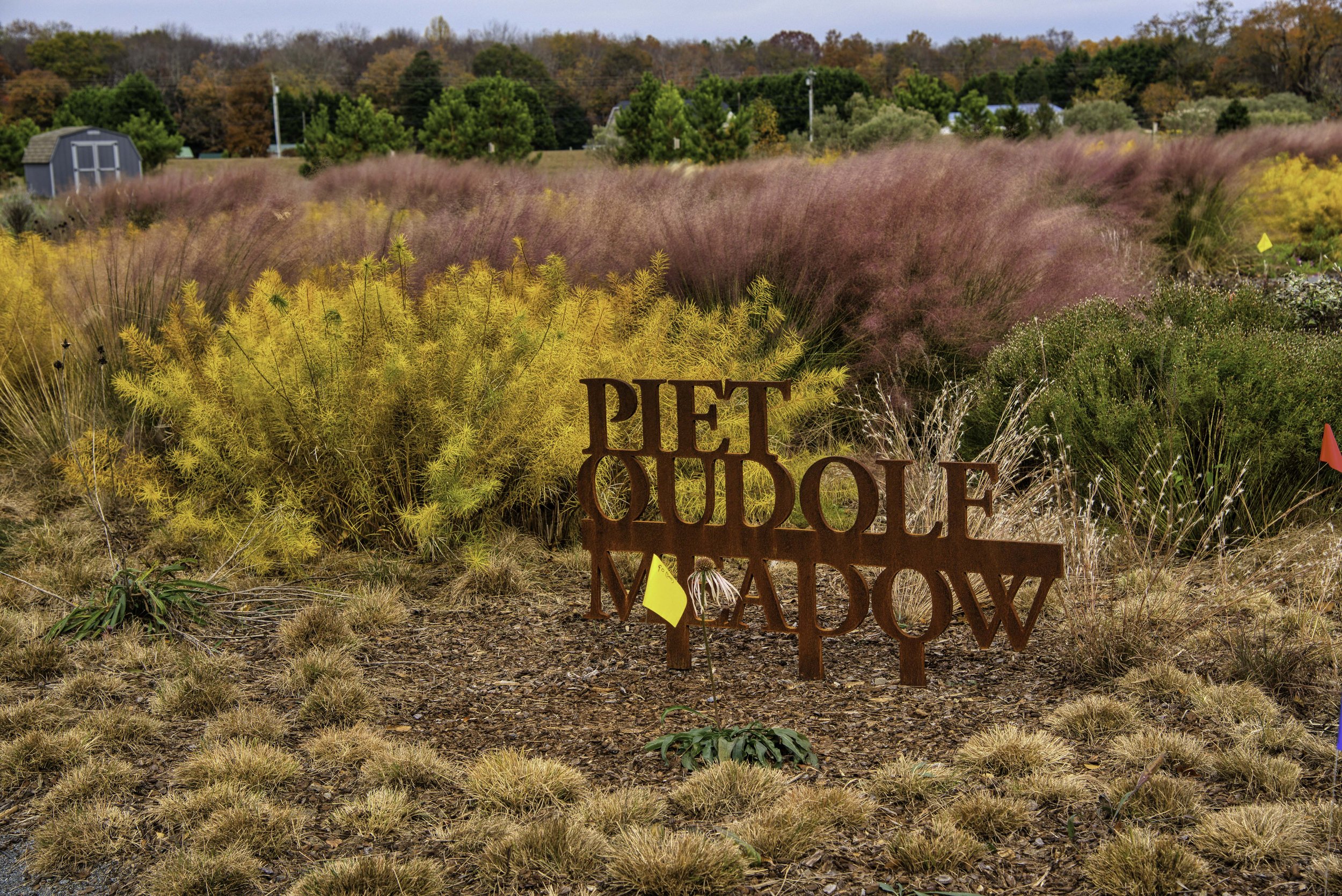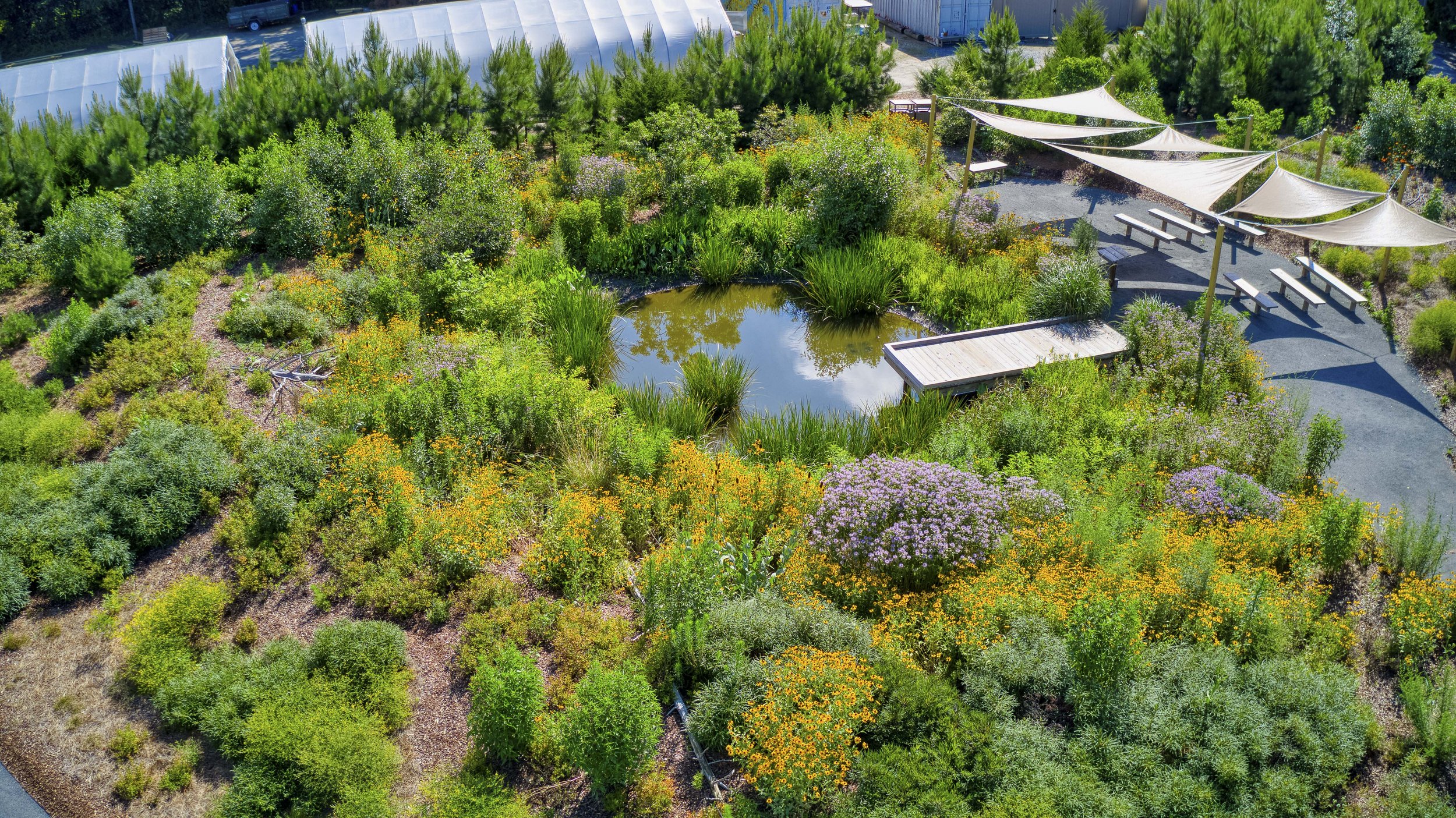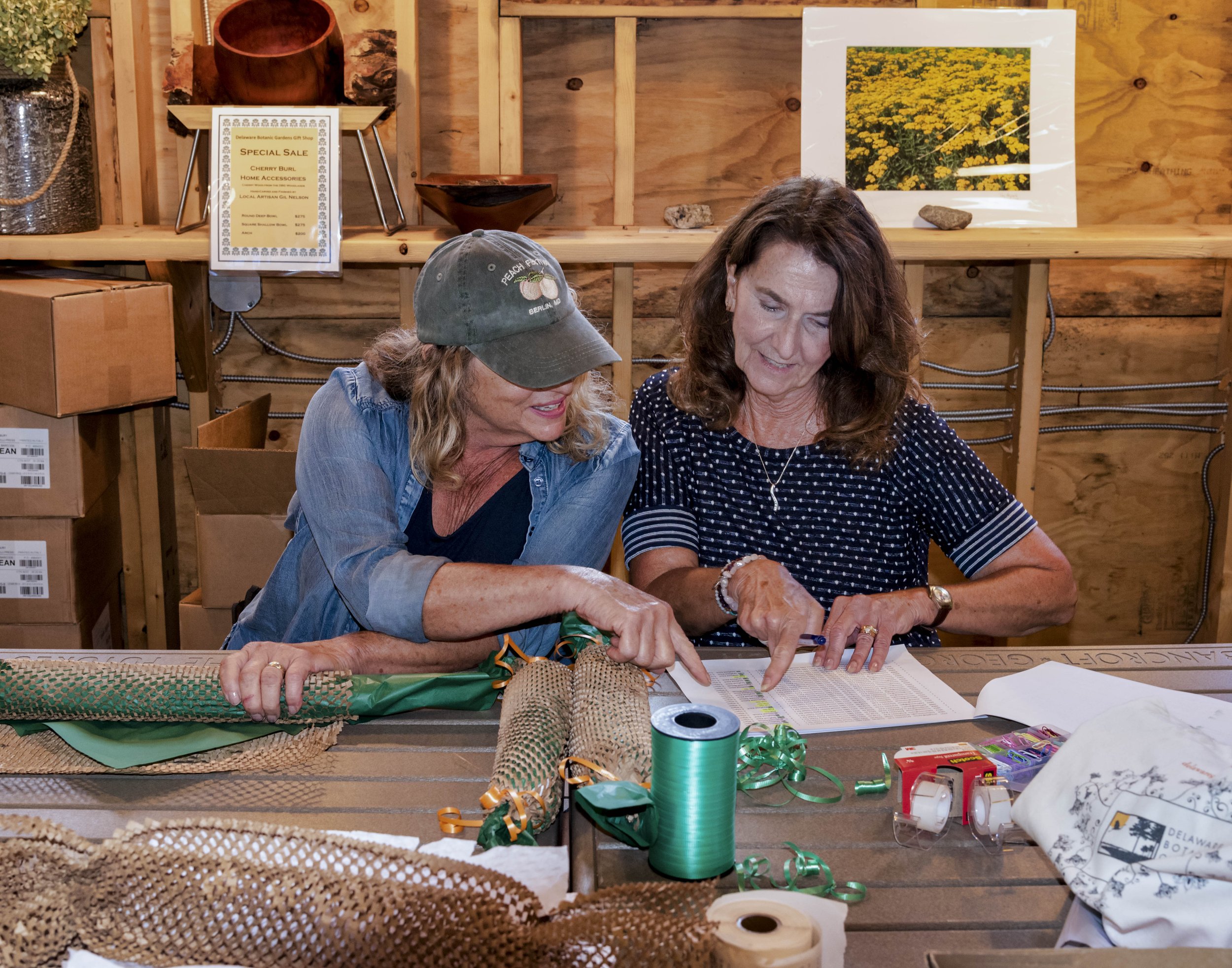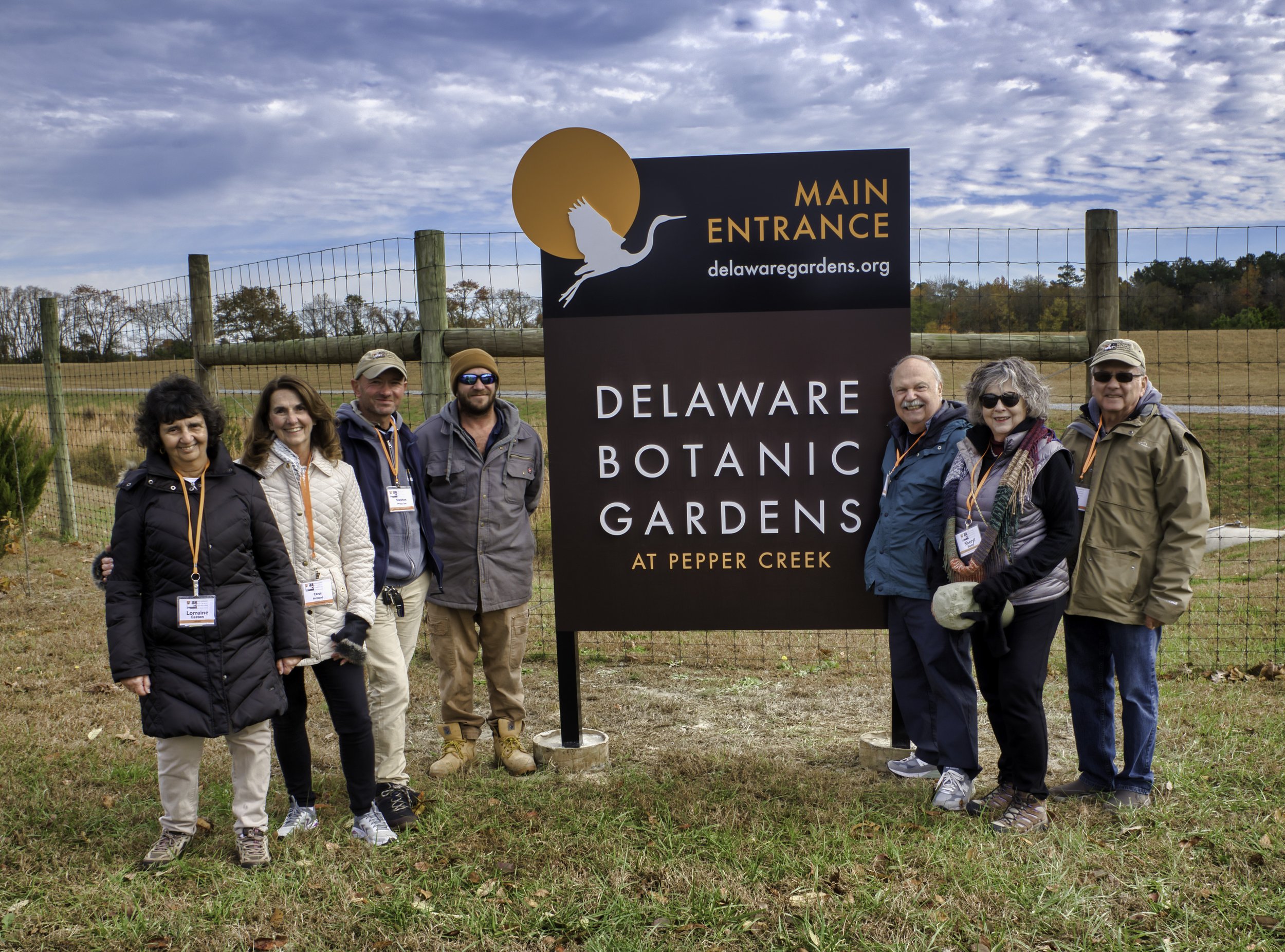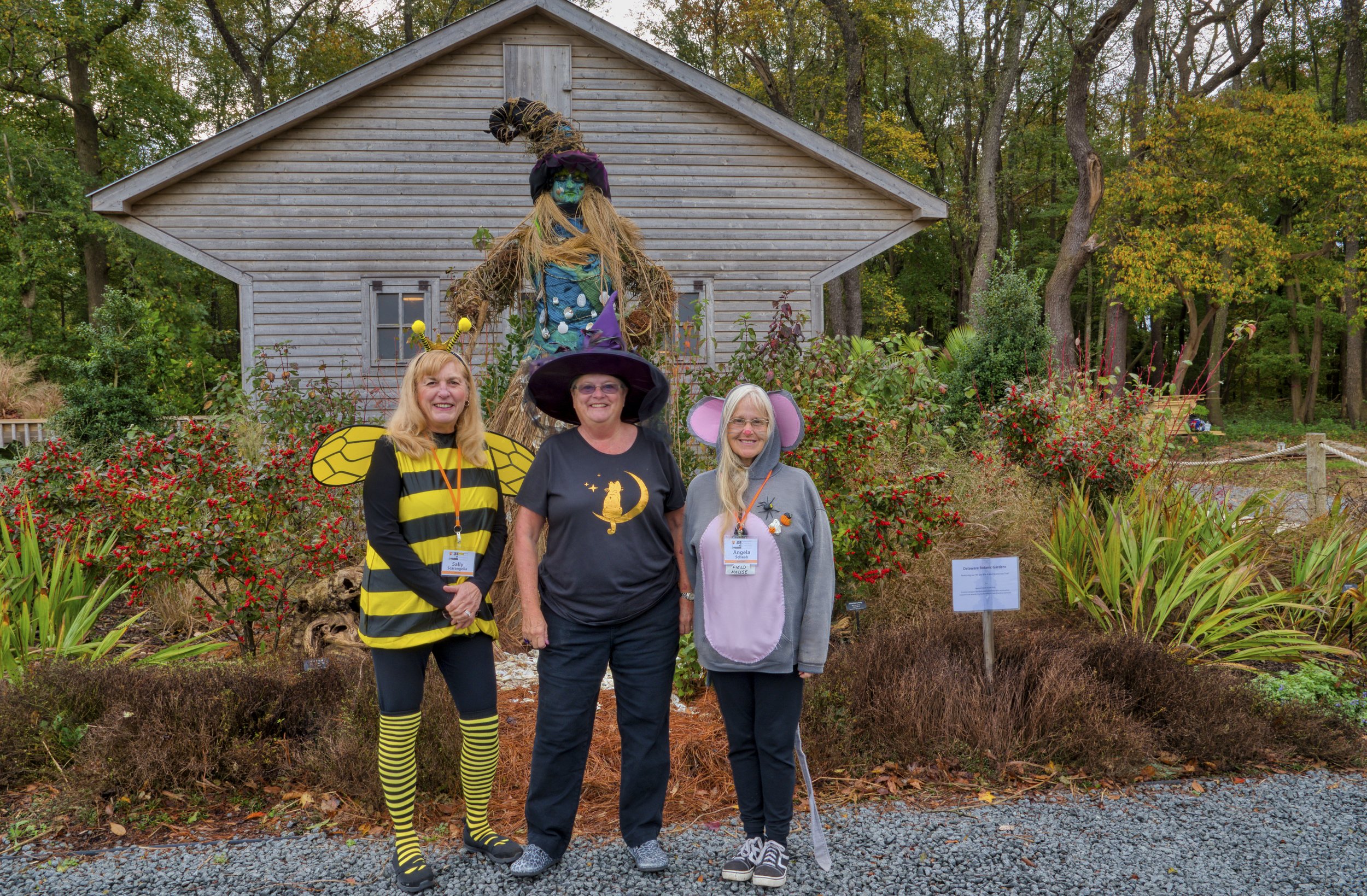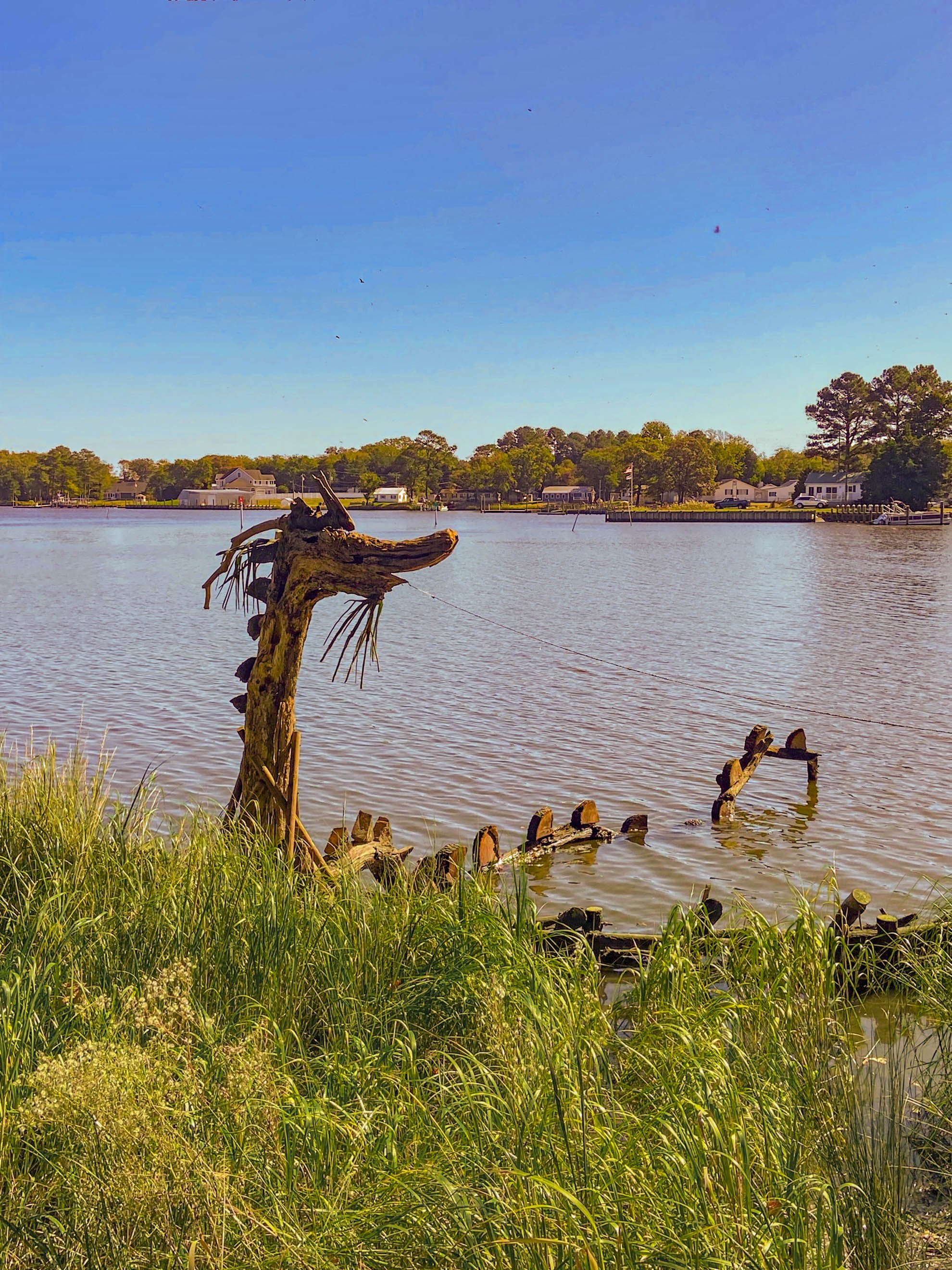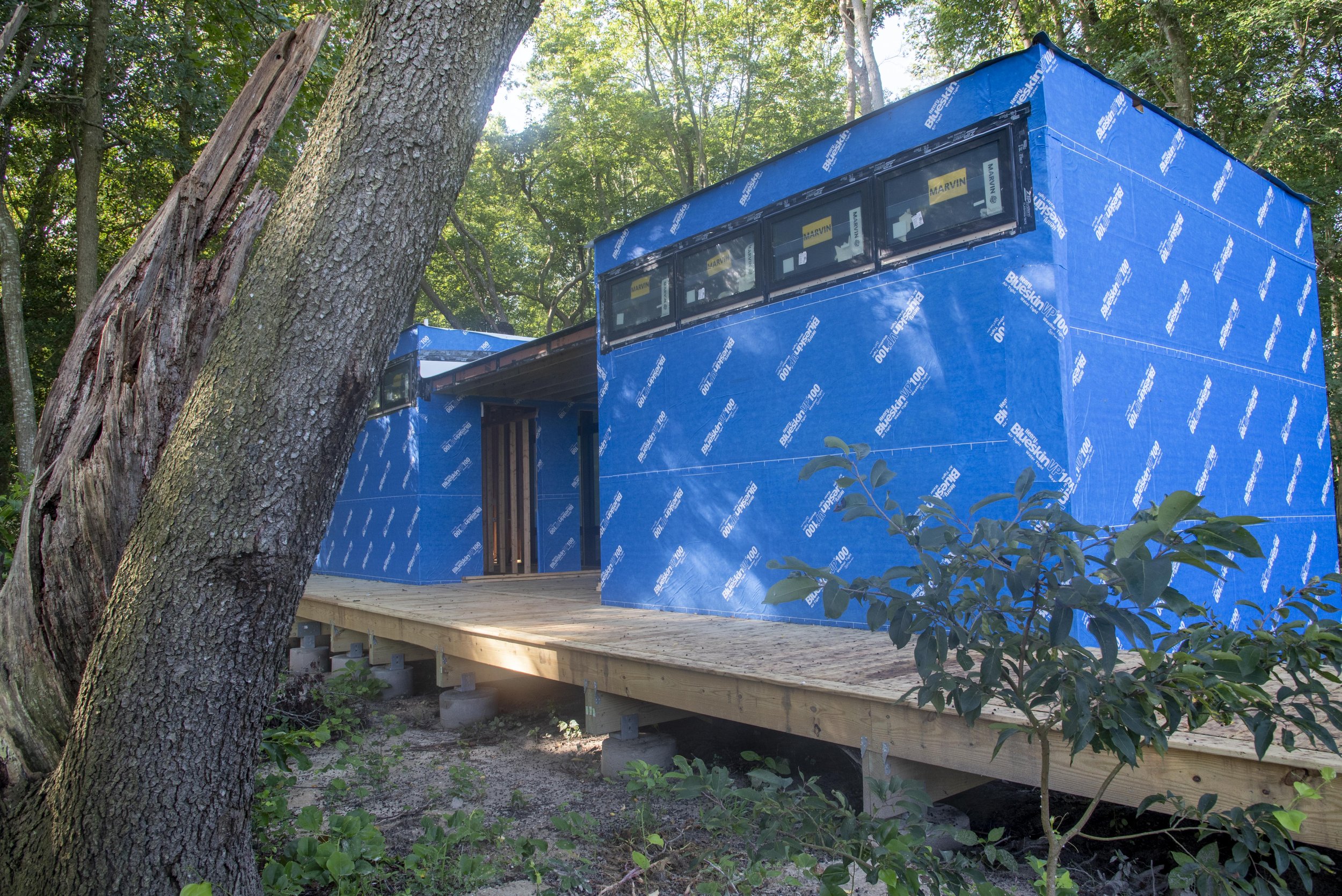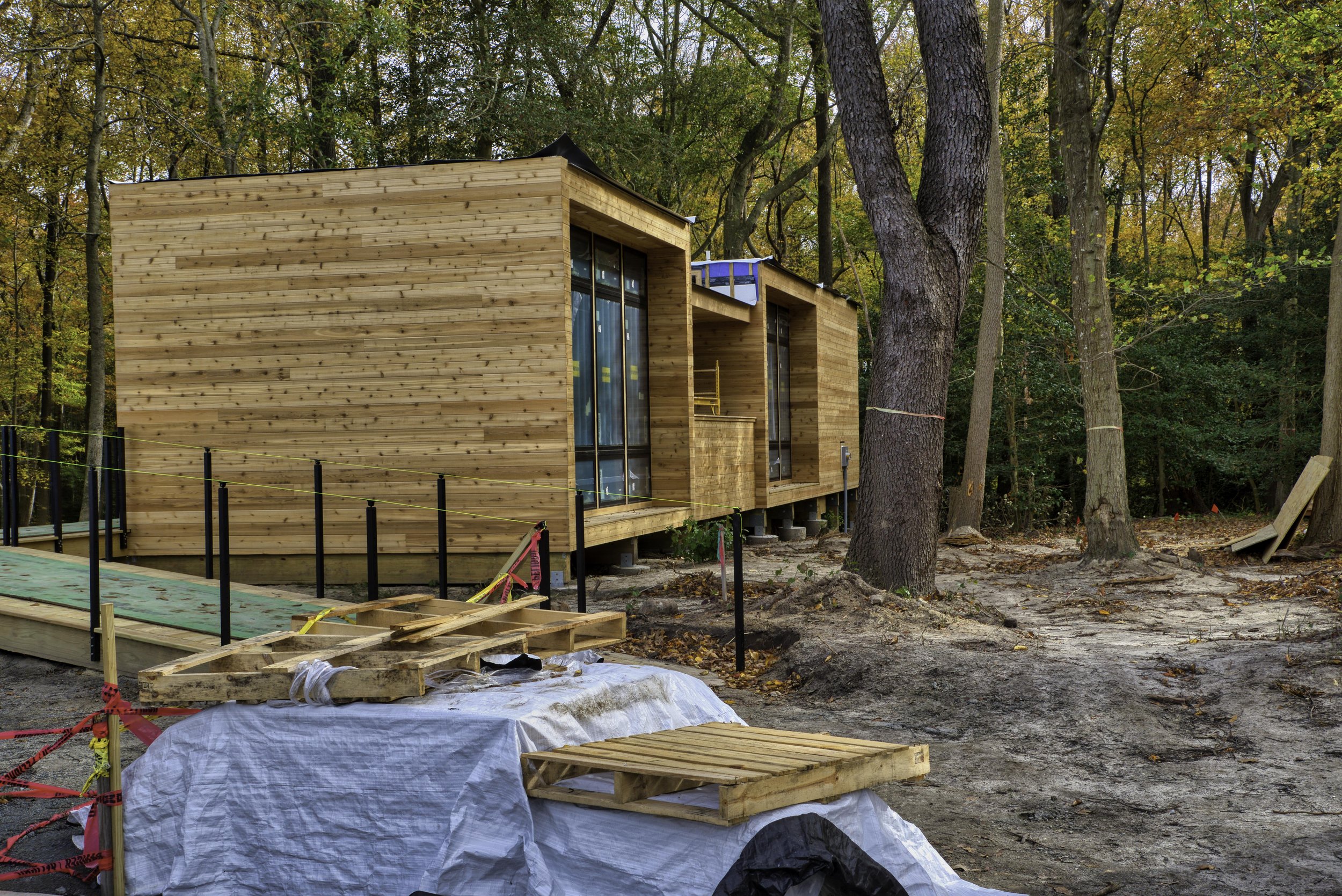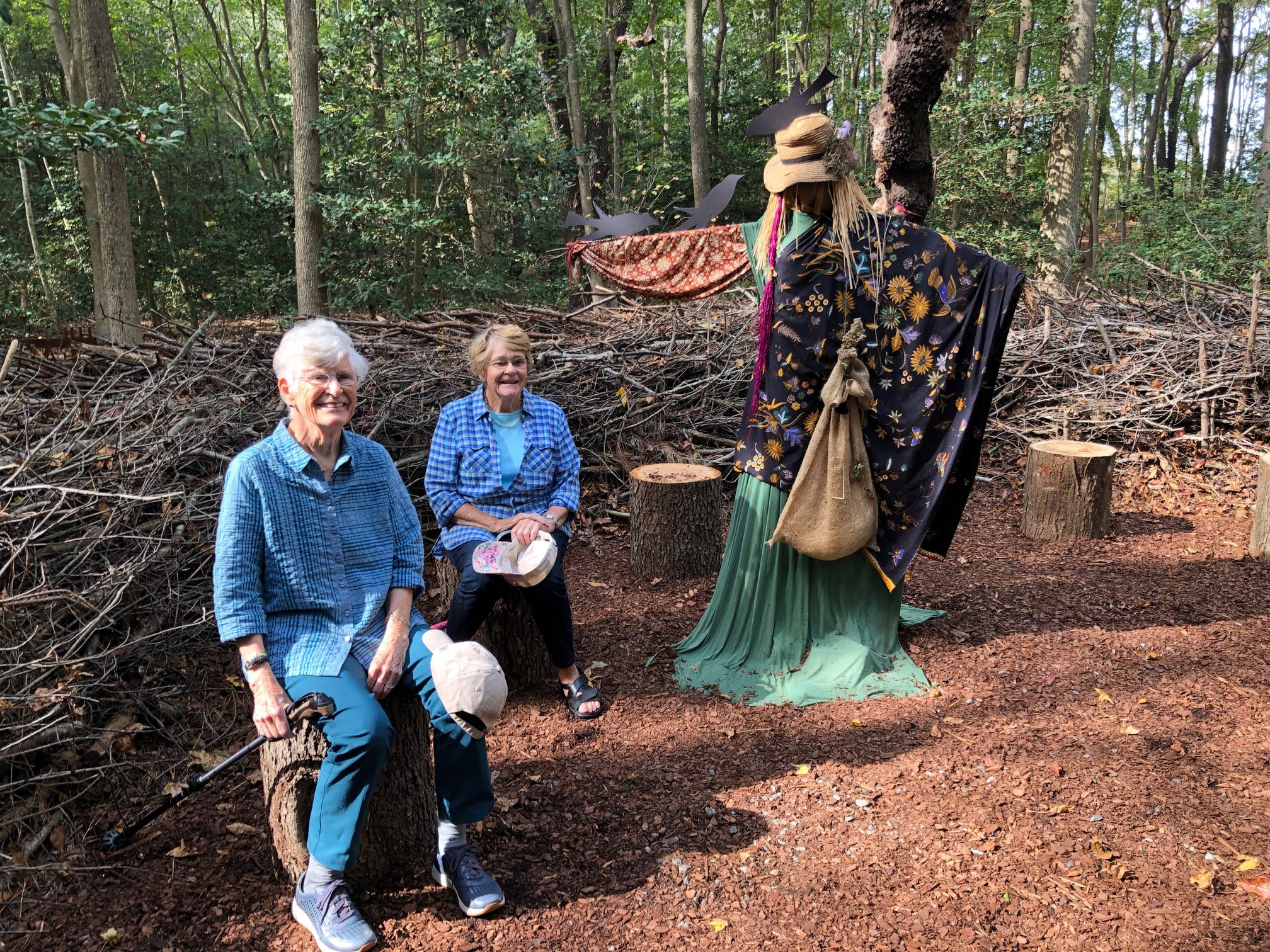Our Story
Our mission is to create a world-class, inspirational, educational, and sustainable public botanic garden in southern Delaware for the benefit and
enjoyment of all.
Our vision is for beautiful, engaging, gardens that inspire and educate.
We are a dream . . .
growing day by day
in colors of green.
Our values encompass inspirational gardens, environmental stewardship, community focus, education and research, organizational transparency, financial responsibility, and civility and respect.
“In the past several months, a bevy of studies have added to a growing literature on the mental and physical benefits of spending time outdoors. That includes recent research showing that short micro-breaks spent looking at a nature scene have a rejuvenating effect on the brain—boosting levels of attention—and also that kids who attend schools featuring more greenery fare better on cognitive tests.”
Roots
In early 2012, a group of energetic and garden-loving Sussex County citizens came together to fill an unmet local need for horticulture education and public gardening resources. So, they launched their dream for a botanic garden in an inspirational waterfront setting in Sussex County.
As later described in the book OUDOLF HUMMELO (THE MONACELLI PRESS, 2021) the Dutch plantsman Piet Oudolf wrote, “A group of local citizens got together to look for a site to establish a public garden that would have both recreational and educational aspects, with a clear focus on native plants. Unlike many such projects, there were no wealthy benefactors, but instead a strong group of citizens who believed that they could achieve and maintain the development of a public garden with minimal resources.” Piet Oudolf, who designed the High Line Garden in New York City and the Lurie Garden in Chicago, would later in 2015 agree to design the 2-acre Meadow Garden at Delaware Botanic Garden, which was built in three phases in 2017-2018. The Meadow Garden is today the jewel in the crown of the gardens.
In 2012, the citizens formed Southern Delaware Botanic Gardens, Inc., now known as the Delaware Botanic Gardens at Pepper Creek (DBG), a 501(c)(3) nonprofit organization. DBG is unique in that it is a volunteer-run organization. The volunteer Board of Directors and Advisory Council bring their professional experience, horticultural knowledge, and management experience to the creation of the Garden. The administration, and operations tasks are carried out by a small 5-person staff, several Board members and hundreds of volunteer garden stewards and docents. All the volunteers and staff are driven by a core love and the passion for horticulture that brought this garden from a dream to a reality in September 2019, when DBG opened to the public.
In 2021, Delaware Governor John Carney recognized this DBG volunteer role, when he presented the 2021 Outstanding Volunteer Award to the DBG Garden Stewards. At that time, DBG President Ray Sander said, “We are very proud of the thousands of hours our volunteers have donated. Without their time, energy and dedication, there would be no beautiful gardens in Sussex County for the community to visit and enjoy.”
What DBG has accomplished since its groundbreaking in December 2016 is to create five major gardens. This progress is due to the focus on the DBG mission, the creativeness of the site master plan, and the hard work of the DBG board, staff and volunteers. The continuing strong support of our members, supporters, business partners, and the generosity of the Sussex County Land Trust is key to sustaining the gardens.
The Sussex County Land Trust's 37-acre site on Pepper Creek, a former farm, was leased in 2015 to the Delaware Botanic Gardens for $1 a year for the next 99 years (renewable twice). This mutually beneficial arrangement reflects a remarkable partnership between two nonprofit organizations with compatible missions. The public benefits richly by having access to the natural beauty of this topographically significant site along an estuary of one of Delaware's Inland Bays - Pepper Creek.
Locals say the DBG is a hidden gem in Sussex County. The Wall Street Journal called the gardens,
Growth
“an oasis of native grasses and seasonally changing flowers that backs up to woodlands.” Situated on thirty-seven acres along Pepper Creek, which flows into Indian River Bay, the garden maintains a living natural habitat to demonstrate the vital impact native plants have on wildlife and our citizens.
From the moment you arrive at the garden parking lot, guests are engaged by the 1/2-acre Rhyne Garden, with its 12,000 flowering native plants, 300 shrubs and 34 “Brandywine” Red Maple trees.
There are five main gardens, including the 12-acre woodlands that gently slopes down to 1,000 feet of shoreline at Pepper Creek. At the shoreline is an observation deck, where guests can enjoy the wildlife and shore plants and grasses.
The woodlands is important because it’s the home to 85 species of birds who feed in the Meadow Garden, designed by world renowned Dutch plantsman Piet Oudolf. The 2-acre Meadow Garden is the featured main garden and has 70,000 perennial plants and grasses, focused on natives and pollinators. Also, in the meadow are 84,000 spring bulbs. In summer, there are butterflies and insects, including bees feeding in the gardens. If you enjoy nature and like leisurely hikes, there are wide ADA compatible pathways as you walk from one garden delight to the next. Guided tours are available from a knowledgeable docent. Next to the meadow is the Dogfish Head Learning Garden, with a wetlands pond and outdoor classroom, with its shade sails. This garden is the educational hub at DBG. where classes are held. The other outdoor classroom is the Learning Nest in the Woodlands.
Nearby is the Folly Garden. It was built on the site of the original 20th-century farmhouse. It has a reflecting pond and 37,500 bulbs and plants shaded by Walnut trees.
In the woodlands you walk the trail toward Pepper Creek you come to the highest point in the gardens, up a rock stairway to the Knoll Garden. It has a beautiful native fern collection and a wonderful view of the glimmering waters of Pepper Creek.
Building this volunteer-run public garden is being accomplished in phases, which will take over a decade to build. The Delaware Botanic Gardens at Pepper Creek aims to be self-supporting, although it will depend heavily on generous help from foundations and individual donors in its early phases. From 2014 to 2021, DBG has raised over $5.5 million. Operational income is provided by garden naming rights, membership dues, admission fees, gift shop revenue, tour fees, event sales, donations, and other forms of revenue. An endowment fund has been set up at the Delaware Community Foundation to build for the future.
The DBG is an important tourist attraction in Sussex County, and is the 11th Stop on the Delaware Tourism Discoveries Trail. The garden is a 35-minute drive from Southern Delaware Beaches
The Delaware Botanic Gardens volunteers are doing three things at the same time; building gardens, building an organization, and raising funds to sustain the gardens. The result is a unique, sustainable, inspirational, and accessible garden for public benefit and pleasure of all.
The Gardens
are an environmentally sustainable habitat that is a place of tranquility, beauty, and education for everyone
are an exceptional coastal plain environment for teaching and learning about nature
use a holistic approach to the study of nature
create a greater awareness of native Delaware ecosystems
enhance Delaware life and benefits Delaware’s economy
emphasize learning through enjoyment and “hands-on” involvement with nature
accentuate learning about nature from natural beauty and by storytelling
serve as a resource for best practices in conservation for local farmers, gardeners, homeowners and developers
maintain a living outdoor classroom as an on-site learning environment
combine science and art in living laboratories
bring local, county, and state resources together around the issues of natural resources, conservation, climate change, and the impact of humankind on nature.
Milestones
2012
The Delaware Botanic Gardens is founded and granted 501(c)(3) status.
2013
Pennoni Associates Inc. is appointed project engineer of record.
The Sussex County Planning and Zoning Commission and County Council approve the property’s conditional use and site plan.
DBG receives its first private foundation grant, followed by two from the Crestlea Foundation.
Pro bono engineering, design, and legal contributions are given by leading companies in Delaware, along with support from elected officials from Dagsboro, Sussex County, state executive and legislative branches, and the state’s elected federal representatives.
2014
The DBG Advisory Council is formed, and First Lady Carla Markell becomes chair and Sheryl Swed becomes Executive Director.
The Sussex County Land Trust offers a renewable 99-year-lease for the site at $1 a year.
Yorkston Consulting is hired to assist in development efforts.
Rockport Analytics completes an economic impact analysis, underwritten by Delaware’s Office of Economic Development and its Department of Agriculture.
2015
Susan Ryan succeeds to the DBG presidency with the retirement of founding president Michael Zajic, and new members are added to the Board of Directors and the Advisory Council
Another Farm Dinner fundraiser on September 3 is sold out.
Fundraising successes this year included $915,000 in grants from foundations and $168,000 in funds from Sussex County legislators, plus tens of thousands of dollars from other donors.
2016
A "dream team" of renowned design professionals is assembled to develop the garden's master plan. They include the award-winning architecture firm Lake/Flato, the internationally recognized meadow designer Piet Oudolf, and the noted Delaware designer Rodney Robinson of RAS Landscape Architects of Wilmington. Several design charrettes take place this year to finalize the plan.
Fundraising to match a Longwood Foundation grant on a two-to-one basis brings results in record time, with contributions in the summer and fall putting the campaign over the top.
New members are added to increase the strength of the DBG Board of Directors and the Advisory Council.
This year's Farm Dinner is sold out once again, with dozens of sponsors signing up to help Open the Garden Gates.
2017
Ray Sander succeeds to the DBG presidency with the retirement of Susan Ryan, and new members are added to the Board of Directors and the Advisory Council.
Another Farm Dinner fundraiser on September 3 is sold out, raising over $100,000.
Fundraising successes this year $915,000 in foundation grants led by including a $750,000 grant for the Longwood Foundation and $168,000 in funds from Sussex County legislators, plus tens of thousands of dollars from other donors.
2018
In 2018, we successfully secured a $5000 grant from the Delaware Forest Service’s Urban and Community Forestry Program for the purchase of 270 “street” trees that front the DBG site. We also conducted our first online fundraising campaign through GoFundMe, successfully raising over $18,000. In addition, in 2018 we have been able to connect the site to the electrical grid through an in-kind donation valued at $70,000 from the Delaware Electric Cooperative and a $42,000 in-kind donation from Nickle Electric.
In 2018, DBG was awarded over $570,000 from the Crystal Trust, the Welfare Foundation, the Rosa and Ellice McDonald Foundation, the Crestlea Foundation, the Marmot Foundation, the Delaware Community Foundation and the Stanley Smith Foundation.
This year’s September 6 Farm Dinner successfully raised over $100,000 and was, for the first time, held at the gardens.
The continued donation leadership of individual Board members has underwritten the completion of the Welcome Center, the Folly Garden Naming Rights and the buildout of the Hoop Houses.
In July 2018, DBG saw the completion of the 2-acre Piet Oudolf Meadow Garden by our local volunteers and visiting horticulturists from Canada, Colorado, Georgia, Massachusetts, New York, Pennsylvania, Maryland, Tennessee, Wisconsin and Iowa who planted over 70,000 native and pollinator compatible plants.
2019
After a multi-year effort, the Delaware Botanic Gardens has been included in Delaware’s Bond and Funding legislation. In July 2018 and July 2019 our Sussex Legislators prevailed. Our project was allocated $100,000 in the 2019 Bond Bill and $200,000 in the 2020 Bond Bill. Also, for the first time DBG was awarded $5000 in the state’s 2020 Grant in Aid Program.
The Entry Garden and Parking Area, the last piece of our Phase I project, got underway in the first quarter of 2019. This will provide 160 parking spaces with a section set aside for tour buses.
Finally, in September we will open. We open the garden gates at the Grand Opening celebration on September 16.
2020
The year began with plans for a great second open season, but came to a halt by the arrival of coronavirus. The primary 2020 DBG goal was to keep everyone safe and healthy during the coronavirus pandemic.
After a four-month delay, the DBG opened under restrictions: wearing face masks, social distancing and washing hands. The gardens opened carefully in three stages: (1) In mid-July open to members only; (2) in late July open to members and their guests; and (3) in August open to the public.
The 2020 watchwords were Virtual and Resilience. Before opening, we had to show people what was blooming and happening in the gardens. The staff created a series of short virtual tours of the Meadow, Folly, Woodlands, Knoll and Rhyne gardens. The business of the DBG was conducted virtually.
Resilience and creativity allowed DBG to access Federal, State and County emergency loans and grants. In addition, our virtual dinner in partnership with SoDel Concepts and Banks Wine & Spirits was a success, raising over $100,000 for DBG operations. Work continued, first with just staff, then when deemed safe, the volunteers returned to their vital roles of maintaining the gardens.
Even amid a pandemic we and our partners, the Center for the Inland Bays and DNREC began a Pepper Creek “Living Shoreline Project” to stabilize and stop erosion using natural wood materials and preserving the shoreline. In addition to adding new pathways to the West woodlands, DBG initiated a Master Naturalist Program.
Banner photographs by Ray Bojarski.
The support DBG received in 2020 was amazing including from major foundations: Longwood Foundation, Crystal Trust, Ellice & Rosa McDonald Foundation, Marmot Foundation, Stanley Smith Horticultural Trust, and the Crestlea Foundation. Additionally, we were blessed with two naming rights donations: The Ellice and Rosa McDonald Foundation for the naming rights for the Rhyne and Helen and Steven Raleigh of Story Hill Farm for naming rights to the West Woodland Edge Garden.
Amid the 2020 coronavirus, what the DBG team learned was the importance of continuing to work together with creativity and resilience. As we start the 2021 Season, we will begin with the safety protocols used in 2020 and hope that the year can bring us all closer to the full enjoyment of the gardens’ growing beauty.
2021
DBG marked the first full year open to the public. The gardens opened in mid-March and closed in mid-November. Both a new Main Entrance sign and state highway directional signs were installed making it easier for guests to find the gardens.
DBG became the 11th stop of the Delaware Tourism “Discoveries Trail” with a 10-foot x 10-foot painting of Meadow flowers by Leah Beach. She added a butterfly and an old- fashioned tree swing as a bit of whimsy.
In March, Gov. John Carney came to visit DBG as part of the National Travelers and Tourism Week. Also, in the spring DBG was honored to be included in the 2021 book “ODULOF HUMMELO” by Piet Odulof and Noel Kingsbury. The book described Piet’s design and planting of the DBG Meadow Garden.
COVID-19, restriction were in place, such as face masks, social distancing required advanced reservations, and limited numbers for tour groups, etc. As COVID -19 vaccinations increased and new cases eased in summer, the restrictions were eased, but with new COVID-19 surges in the fall, the COVID restrictions never went away. Even with COVID cases spreading in Delaware, the DBG top priority remained a safe and welcoming environment for all.
This was a year for new staff arrivals. In January, the first full-time Director of Development, Craig Sims arrived and within a month he created a new bi-weekly electronic publication called “Garden Snips,” which gave brief timely reports on current happenings in the gardens to our 3,500 subscribers.
Just before the garden gates opened on March 18th, the new Director of Horticulture, Stephen Pryce Lea arrived. He created new educational opportunities for guests and volunteers, such as his “Fall Gardening for Wildlife Walks” and he worked closely with Piet Oudolf to design a plan to plant 84,000 new spring bulbs in the meadow garden. The staff and volunteers completed that major planting in an amazing four weeks in November. So, the meadow had 70,000 perennial plants and grasses, plus the new 84,000 bulbs or 154,000 plants. Also, 2,000 more bulbs were planted in the Folly Garden bringing the total there to 37,500 bulbs and a new reflecting pond was installed in the Folly. A new 100 Tree Oak Grove was planted, and various tree and scrub enhancement plantings were added to other garden areas.
The DBG staff consisted of four people, including veterans Sam Cashdollar, Director of Grounds & Facilities, and Horticulturalist Jeremy Cole. In July, Jane Hines DBG Financial Manager joined, bringing the staff to five. The DBG Board of Directors added seven new members to reach a total of 15 members. The Board approved new DBG Bylaws to replace the nearly ten-year old Bylaws. One new Advisory Council member was appointed.
The year was packed with activities such as the April - “Frolic in the Folly,” June - “Sip & Saunter,” and September 23 - ”Virtual Annual Dinner.” In partnership with SoDel Concepts and Banks Wine & Spirits , the annual dinner was a success, raising over $112,000 for DBG operations. This year, the dinner went statewide as Board Member LeDee Lickle Wakefield and David Wakefield hosted an in-person dinner at their Back Burner Restaurant in Hockessin, DE.
New Garden activities were created in 2021 including: July-August - “Butterfly Thursdays;” October-November - “Fall Gardening for Wildlife Walks;” and for the first time DBG partnered with the Rehoboth Beach - Dewey Beach Chamber of Commerce to be part of the October 29-31 Sea Witch Festival. From October 14 to November 14th DBG held the “Fall Harvest Celebration.” It included a 9-foot tall DBG Sea Witch created by Volunteer Leader Jan Poli, and the staff and volunteers created a unique scarecrow trail, which received rave reviews from members and guests.
Community service and outreach was part of the 2021 schedule with Earth Day, Mother’s Day and Veterans Day turned into “food drive,” days, when people received free admission if they brought food donations. DBG collected over a ton of food for Food Bank of Delaware in those three days. On Veterans Day there was also free admission and a free pass given to all veterans. Then, on July 22nd, DBG partnered with Beebe HealthCare, Sussex County Libraries Bookmobile and Sussex County Emergency Medical Services (EMTs) to hold a COVID-19 Vaccination Clinic in the parking lot, with free admission and passes for the clinic staff, and anyone receiving a vaccination.
As part of DBG’s environmental stewardship, two Electric Vehicle Charger stations were installed at the parking lot with partner Electric Vehicle Institute (AVI), allowing members and guests to charge their vehicle while visiting the gardens.
The main construction project was centered on the new 800 square - foot bathrooms, designed by Architect Scott Edmonston and constructed by WN Builders. The construction was delayed by COVID supply chain issues, but the restrooms will be ready for the March 2022 season opening. The other Capital Project planning this year was focused on the Annette Pennoni Meadow Pavilion. This 2,500 square-foot pavilion will give the gardens an all-weather facility to expand our annual program season and bring in new revenue. Architect Scott Edmonston and his associate Erich Pfeffer worked with Mark Davidson from Pennoni Engineering to prepare the Request For Proposal (RFP) and the plan is to select a contractor in early 2022 and to begin construction in 2022. The plan is to dedicate and open the pavilion in spring 2023.
In 2021, DBG had a successful financial year. This year some of DBG’s most supportive foundations, who gave generous grants in 2019 - 2020 could not accept any DBG grant proposals until next year. However, Yorkston Consultants, helped gain financial support. It included a major grant from the Ellice & Rosa McDonald Foundation, and the State Bond Bill for capital projects. Also, DBG received two wonderful naming rights major donations. The Learning Nest was named by sisters Sally Gore and Peg Emerson, and The Point was named by longtime supporter Barbara Peters. The Year-end campaign concluded a very successful financial year.
The volunteers are the solid foundation of the gardens. On December 23rd, the State of Delaware announced that DBG Garden Steward volunteers were selected for the 2021 Governor’s Outstanding Volunteer Service Award. In short, the Garden Stewards were recognized for important contributions improving the quality of life in the State of Delaware and Sussex County. This honor was well deserved.
2021 was a year of showing and growing the gardens, community service; and planning for the future. Thanks to the combined DBG Team of board members staff, volunteers and supporters who all worked together - the first full open DBG season was a success.
2022
Being selected as the 2022 "Best Attraction” by Southern Delaware Tourism Office was the capstone of a remarkable year. In the last 12-months, DBG received National, Regional and Local recognition, including:
the Governor's Award for Volunteer Excellence
the 2022 Award for "Best Restored Shore Project," for the DBG Living Shoreline Project, alone with our Center for Inland Bays partner, by the American Shore & Beach Preservation Association
rated as one of the "Top Ten" best American 2022 restrooms by CINTAS. The DBG Restrooms were also nominated for a design award by the American Institute of Architects
received the Fundraisers and Communicators Excellence (FACE) Award for by the Association of Fundraising Professionals for DBG's 2020 Annual Report
received $150,000 for horticultural and best stormwater practices from the State of Delaware
received $150,000 from the Ellice & Rosa McDonald Foundation and Crystal Trust
raised over $139,000 at DBG's Annual Dinner and continued to receive donations to the end of the year Campaign
set new records in admissions, membership and educational programs
volunteers donated over 5,600 hours as GardenStewards and Docents. Volunteers and staff planted 86,000 new spring bulbs in the gardens, which means DBG will celebrate spring 2023 with over 200,000 spring bulbs in bloom
Cam Yorkston, the DBG Development Consultant, was awarded the Lifetime Achievement Award from Delaware
Association of Fundraising Professionals. Cam and Kathy Yorkston have guided the DBG's successful fundraising since 2015, with over $7.5 million raised to date
DBG reopened on March 17th, with festivities including the ribbon cutting ceremony, opening the new 800-square foot DBG Restroom Facility. The ceremony included remarks by the Sussex County Council President Michael Vincent and members of the Sussex County Council, representatives of the Sussex Land Trust, and DNREC representative. DBG President Ray Sander and DBG Executive Director Sheryl Swed co-hosted the ceremony. They saluted Scott and Jen Edmonston of SEA Studio Architects, and WN Builders for the modern restrooms with green technology features.
The gardens activities included: "Frolic in the Folly," Earth Day and Mother's Day Celebrations. On Earth Day DBG set a record of 368 daily admissions and then on a re-scheduled Mother's Day (due to severe weather) the admission record was again broken with 409 guests. On both Earth Day and Mother's Day DBG offered "free” admission if guests donated food for Food Bank ofDelaware. DBG collected over 1,900 pounds of food for Food Bank of Delaware. Other summer activities included "Bugs & Beer" at the learning Garden, and "Sip & Saunter" garden stroll.
Stephen Pryce Lea, Director of Horticulture, received the added title of Director of Educational Programs, and a new staff-volunteer committee was formed to expand DBG educational programs. The new activities included: Expanded Seasonal Meadow Tours; Expanded Tree ID Tours; Summer Blooms & Butterflies Class; Great Monarch Migration Class; Summer and Fall Container Classes; New Woodlands' Discovery Trail with eight animal sculptures; Fall Bulb planting class; and Happy Holly Days, including a tour of the Anderson Holly Collection and a Wreath Making Workshop.
The organization continued to grow. DBG added one new board member, Michael Riska; David Small became chair of the Advisory Council, and five new Advisory Council members, including: Jeremy Hager, Dan Barbato, Dan Levin, Carol Bason and Elizabeth Rives. A new staff member, Bridget Curran, Horticultural Assistant, was added for a full-time staff of five people.
The main added garden enhancements included: planting of 86,000 new spring bulbs in the Rhyne Garden, Meadow Garden and Folly Garden. Also, thanks to a UCF DE Grant Award of $5,000, the planting 1,683 sapling trees on the berm along Piney Neck Road. Also, thanks to a TEDI (Tree for Every Delawarean Initiative) planting of 155 trees along the West Woodland trails. A new native Oak Grove of 80 trees were planted near the maintenance service road. The new reflecting pool was opened in the Folly Garden. Finally, work began on the Gateway Garden Demonstration Hedgerow Garden, thanks to a DNREC grant of $74,400.
DBG Community Outreach activities included a major new partnership with nine Sussex County Public Libraries with "free" DBG admission passes available for library clients. Off-site educational presentations by the Director of Horticulture were made at a Monarch Butterfly Workshop at Millville Town Hall and to the "Lewes in Bloom" Volunteers at the Lewes Public Library. DBG information tables were at community events including: Native Plant Sale/Water Family Fest at James Farm Ecological Preserve, Oceanview; Boardwalk Arts Festival, Bethany Beach; Trap Pond State Park Nature Fest; and Dagsboro Night Out. The DBG was a presenting sponsor for Dagsboro "NightOut" and offered a "free" admission day for Dagsboro residents.
Fund raising events were highlighted by the September 29th "Back to the Garden's" Annual Dinner. Over 300 guests were thrilled to be under the big white tent in front of the Piet Oudolf Meadow. DBG again partnered with SoDel Concepts to present an excellent dinner. This dinner marked the 10th anniversary of the DBG SoDel partnership and Lisa & Scott Hammerer of SoDel Concepts were honorary co-chairs of the dinner. Thanks to dinner sponsors and challenge donors DBG raised a record setting $139,000. That included the $25,000 challenge by Ron Bsss and George Robbins, which raised $68,709.
In 2022, DBG had a highly successful financial year. This year there were two new naming rights donations. Barbara Peters sponsored the naming rights for the Point, and Charlie Zonko sponsored the naming rights for the Woodland Ridge Garden. In June, Schell Brothers, one of the regions leading home builders, selected DBG for their KUDOS program. This program raised $10,000 for DBG.
This year will be remembered as the "record setting" year. The future challenge is to maintain the momentum and build upon the these records. As always the dedicated staff, volunteers and supporters made all these things happen in 2022.
